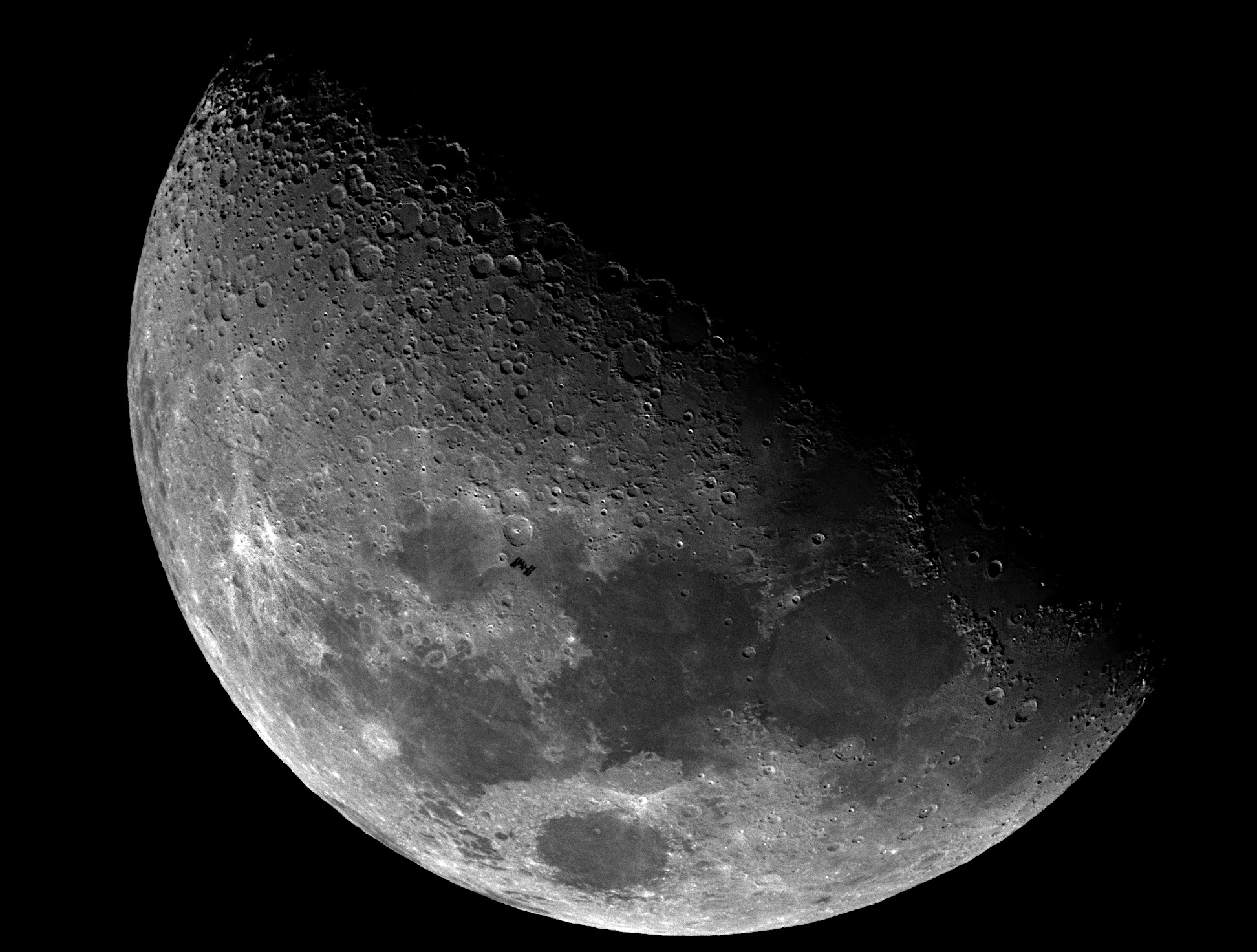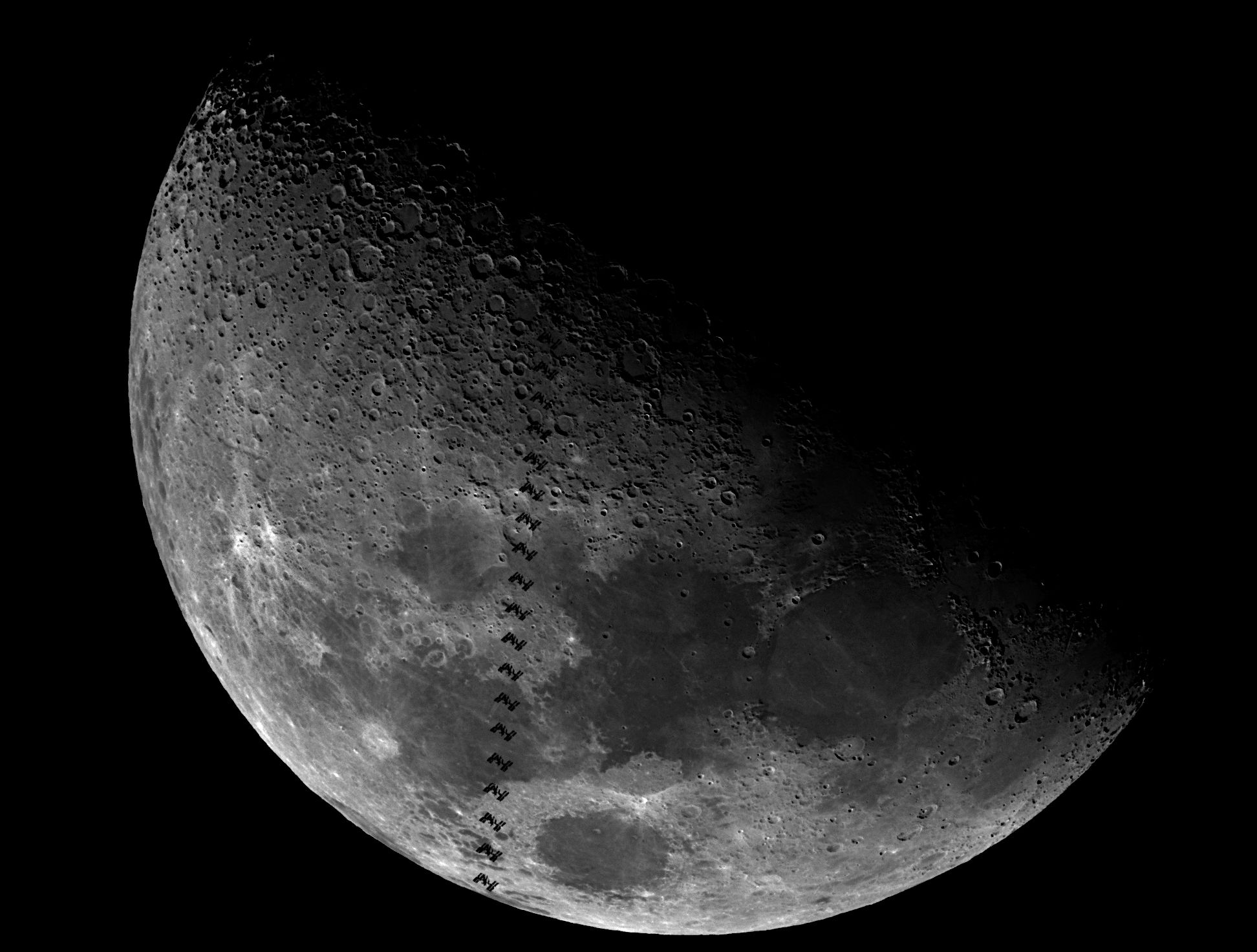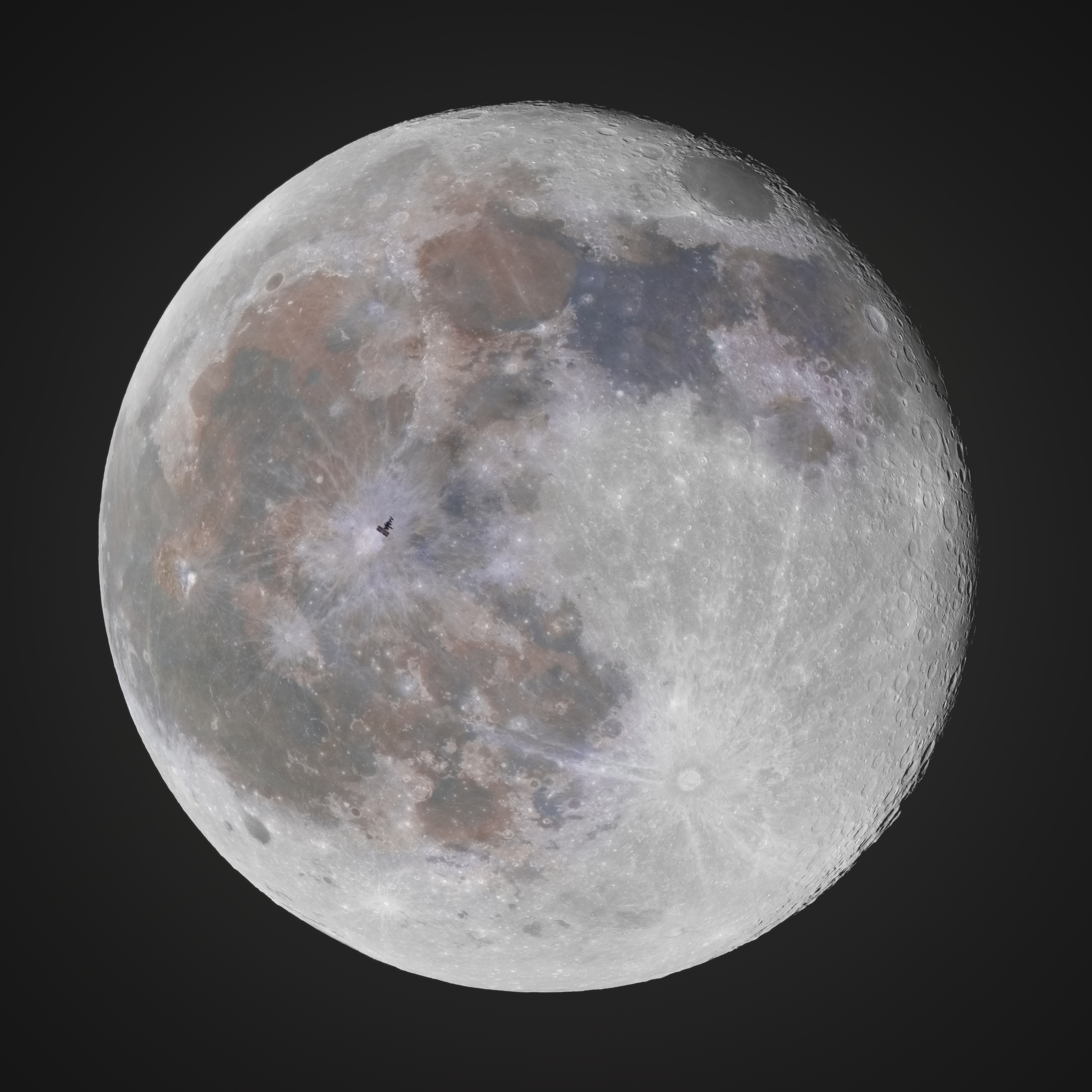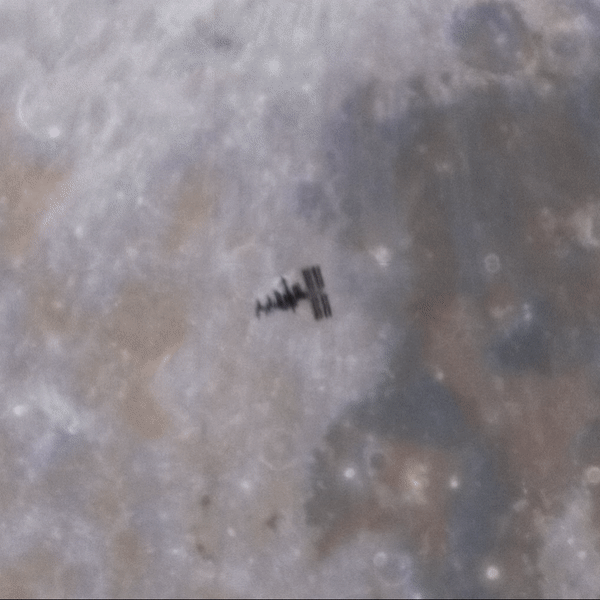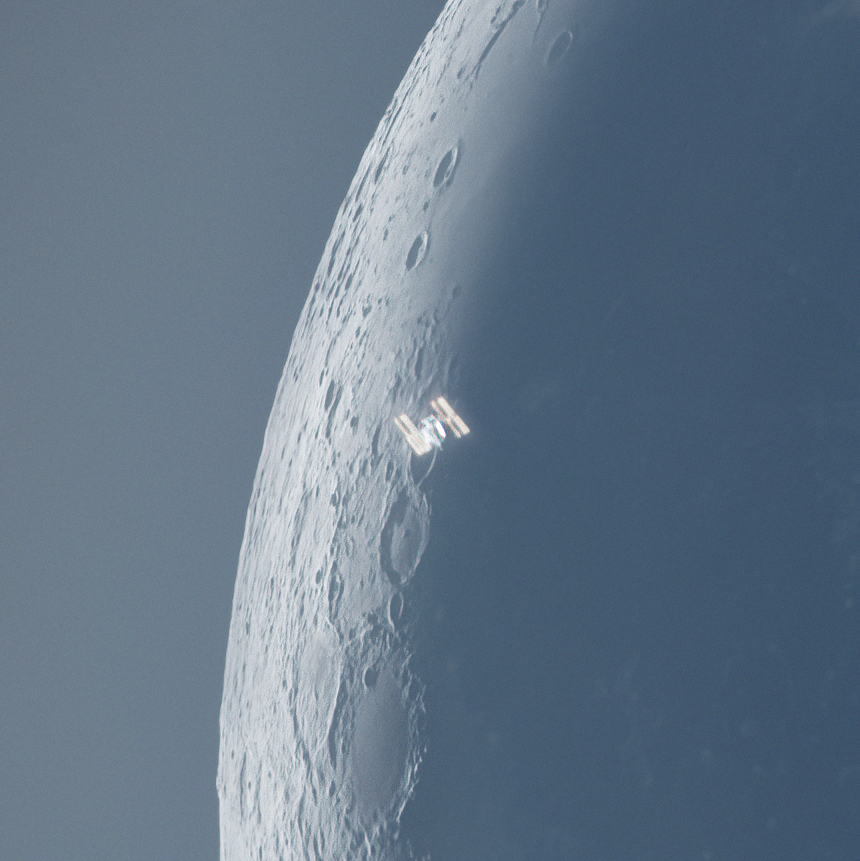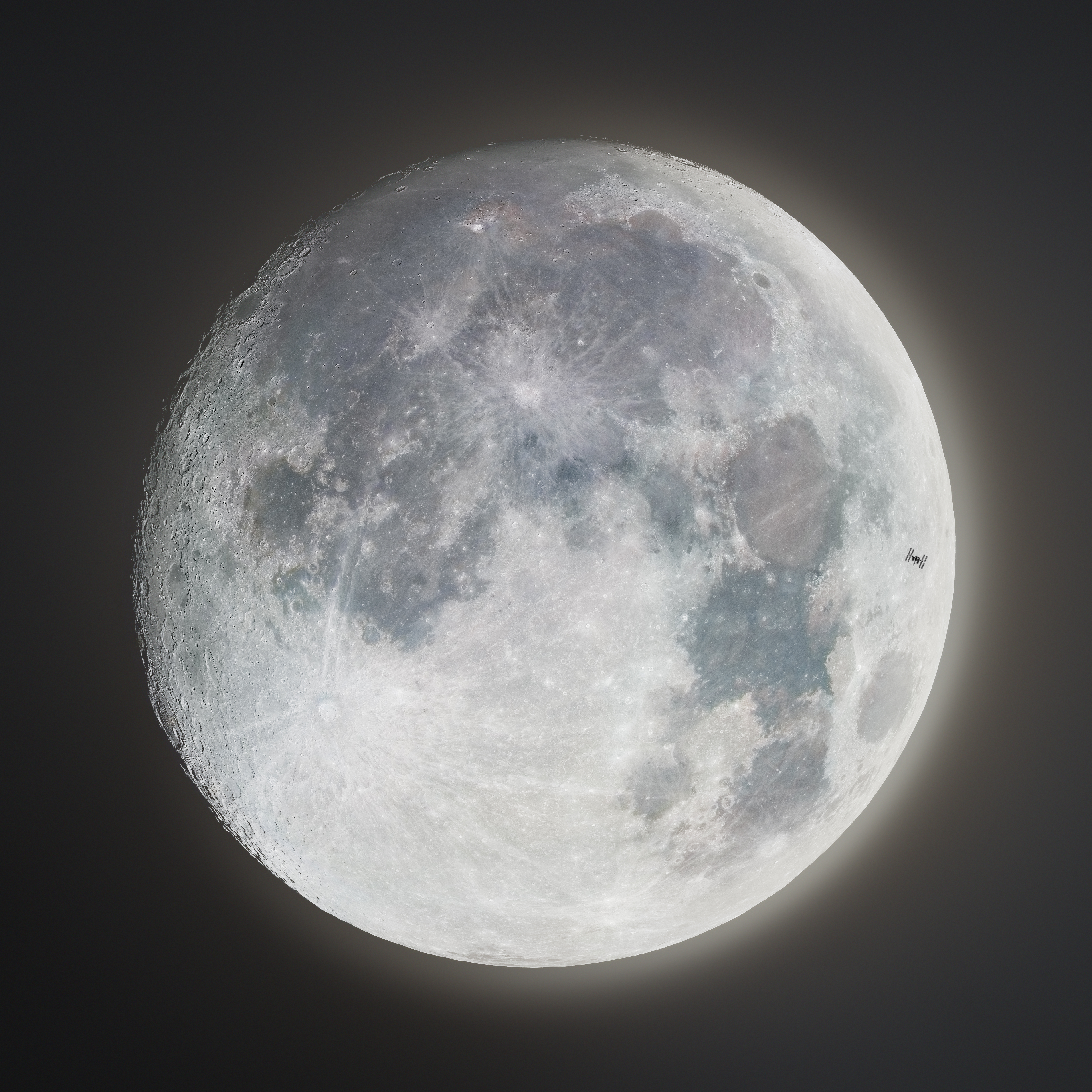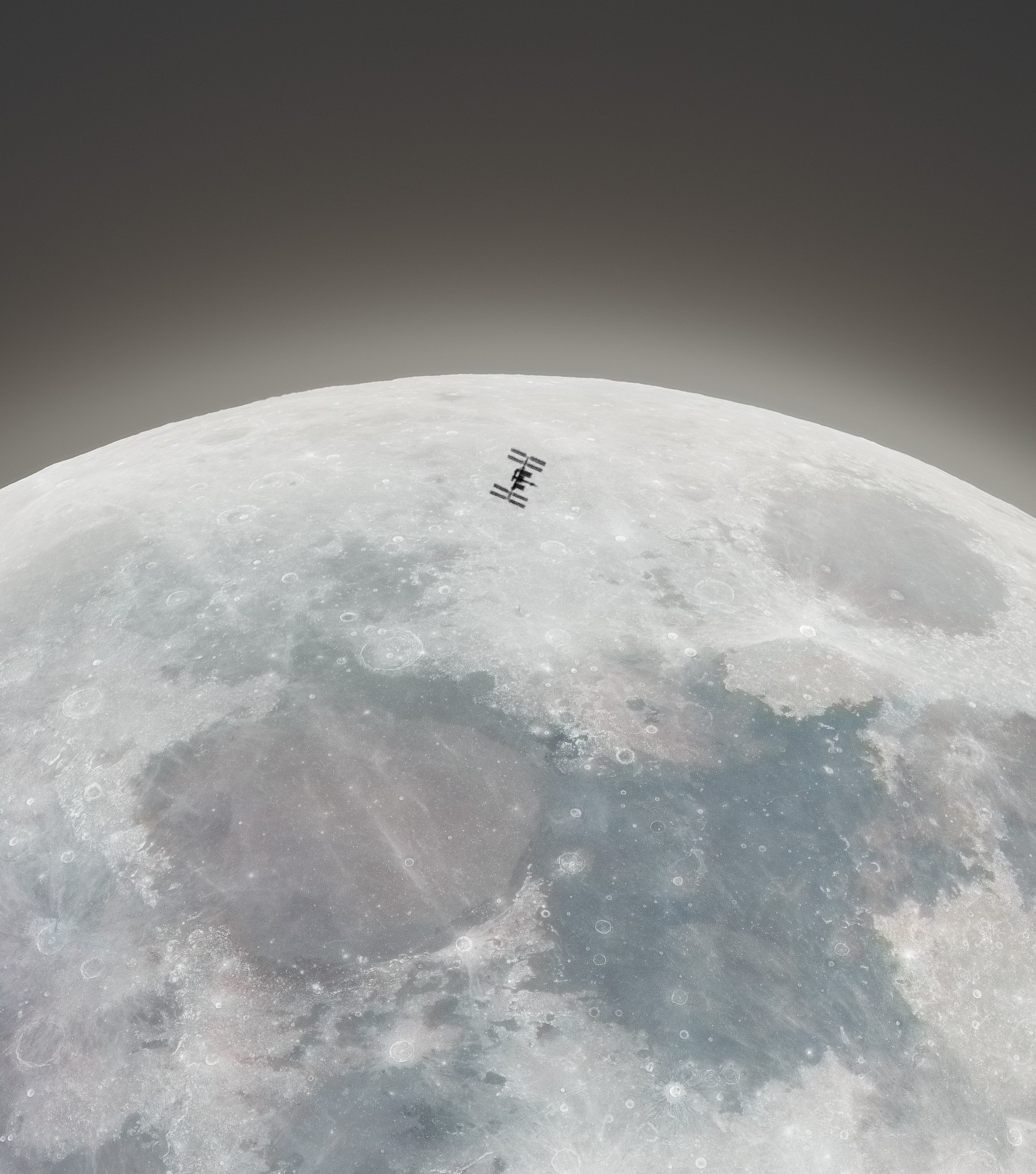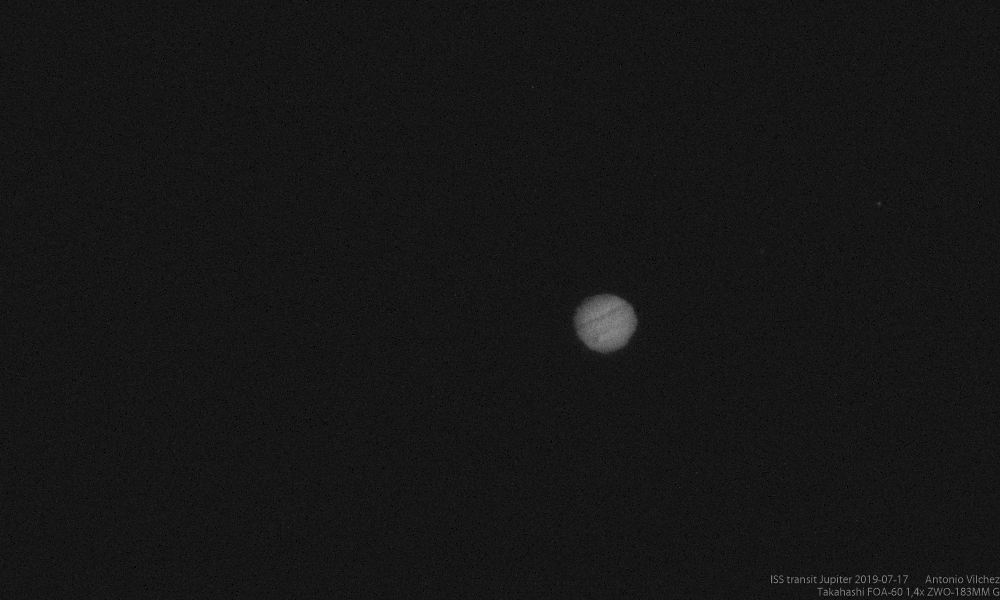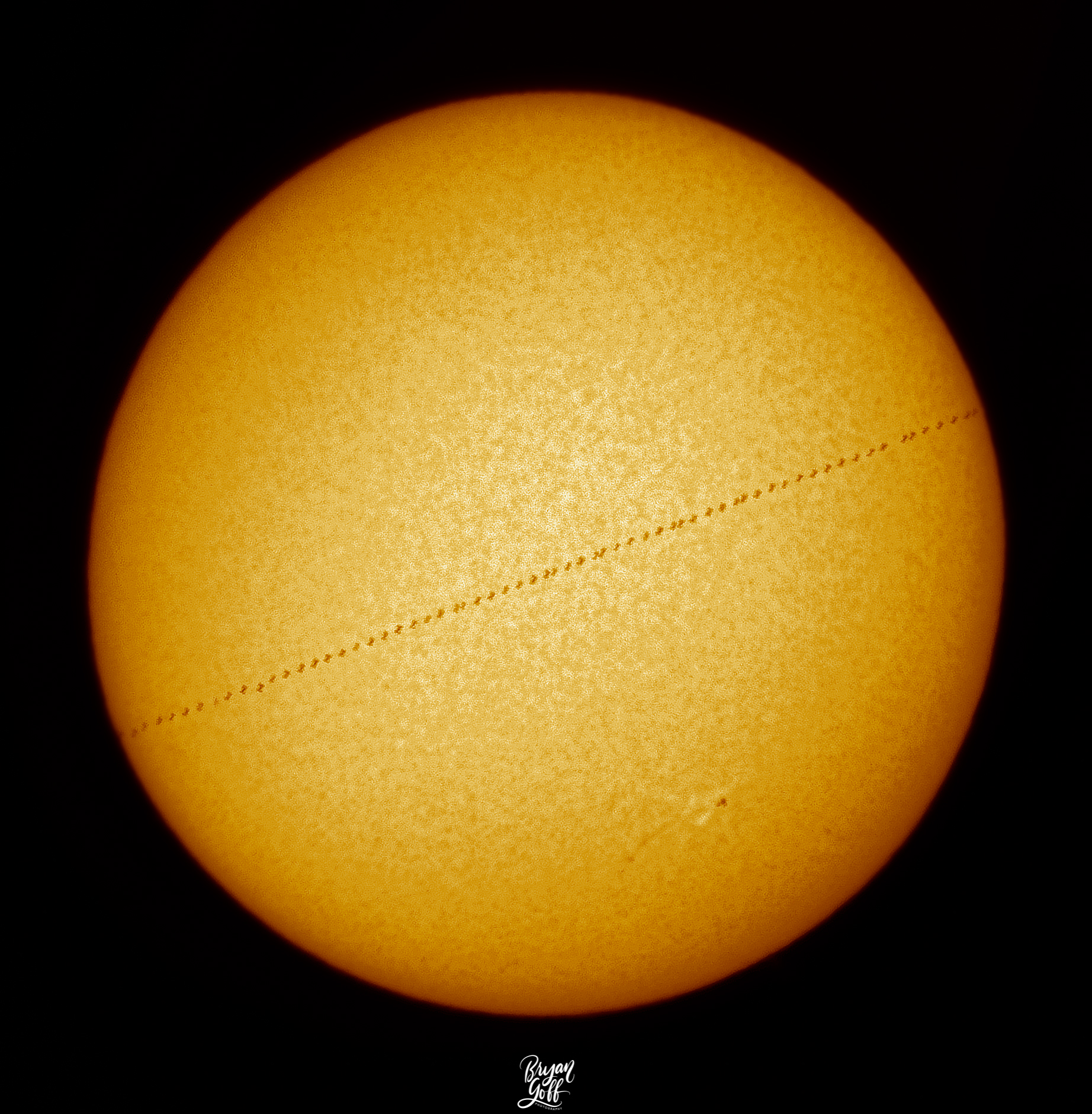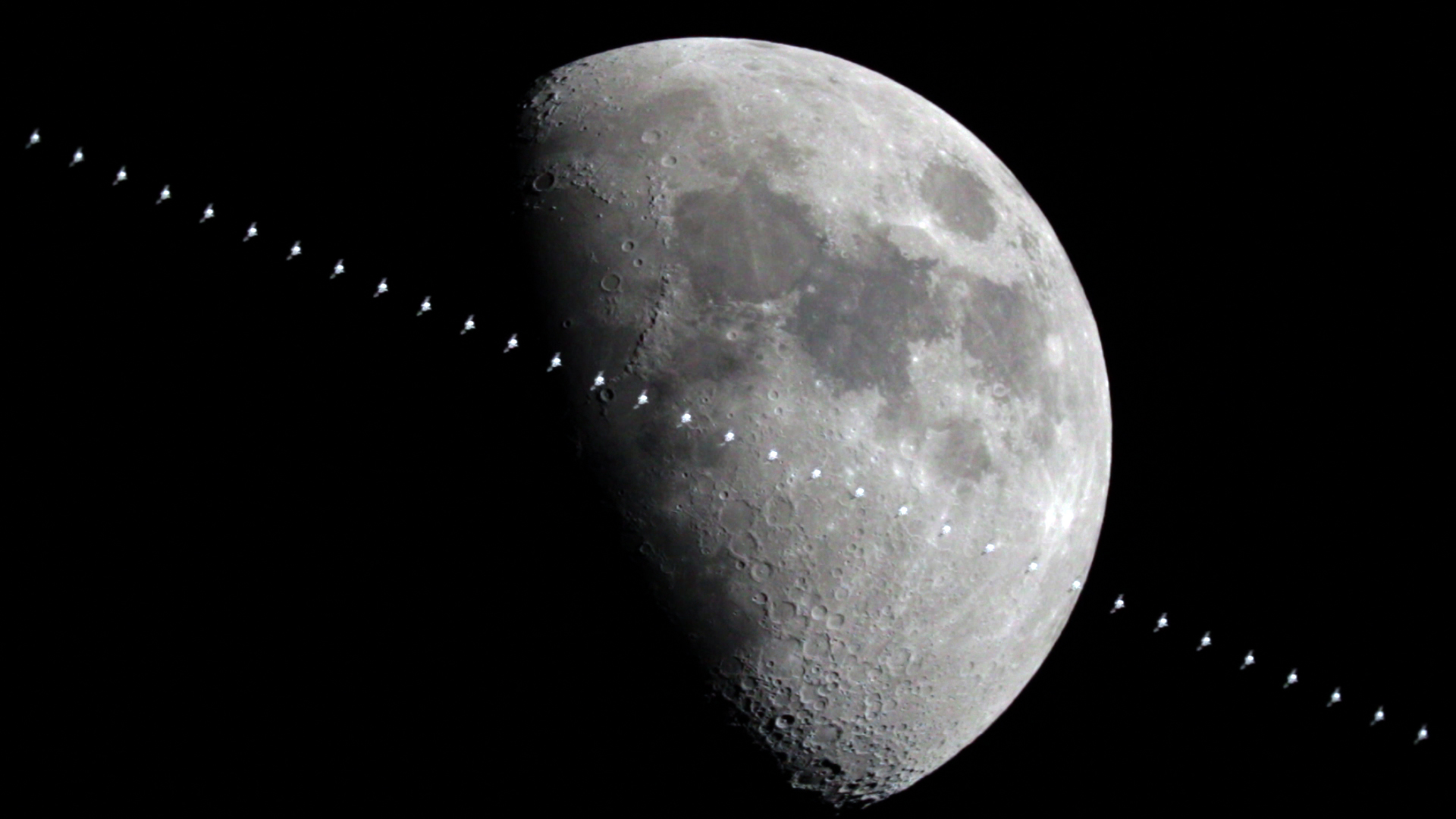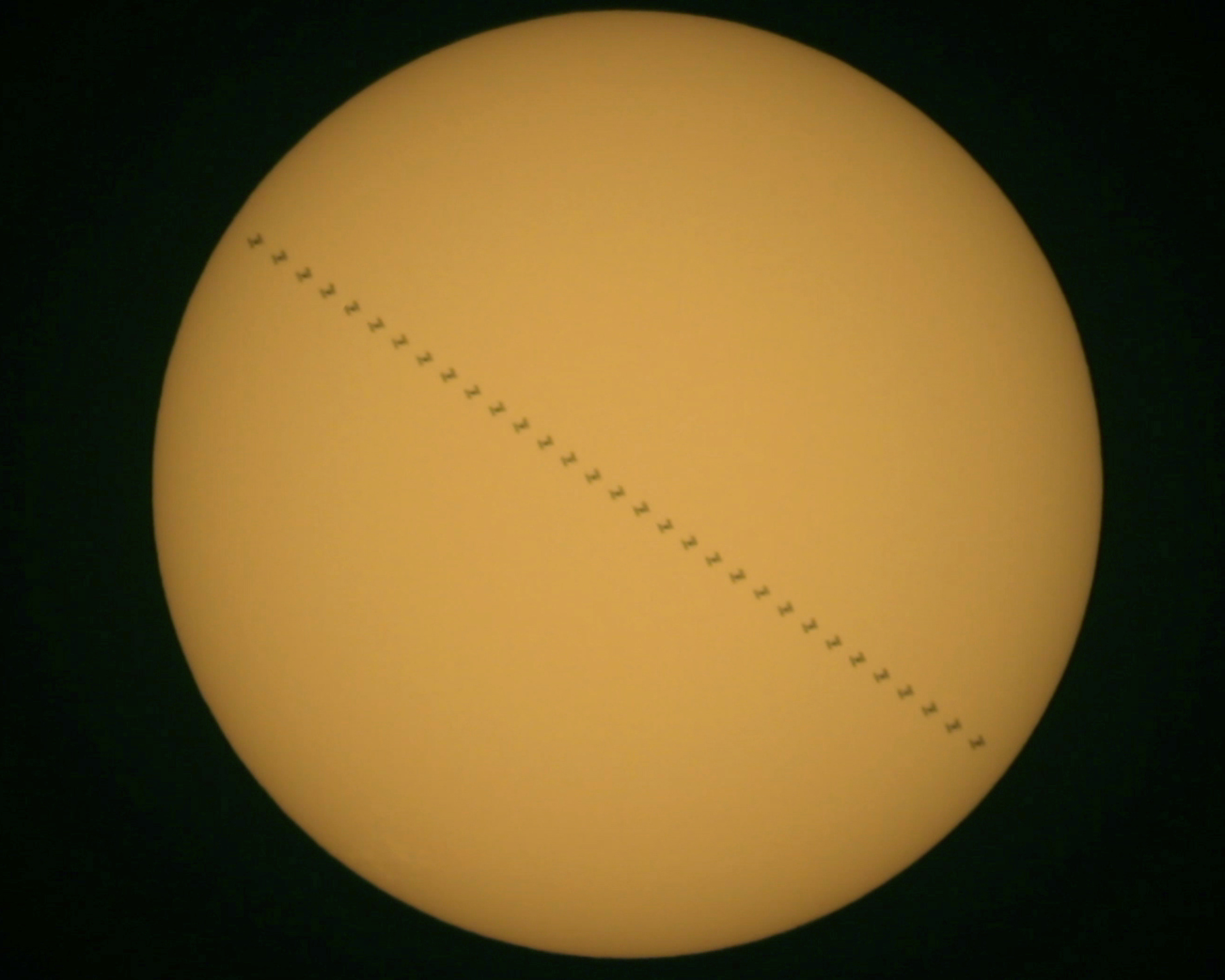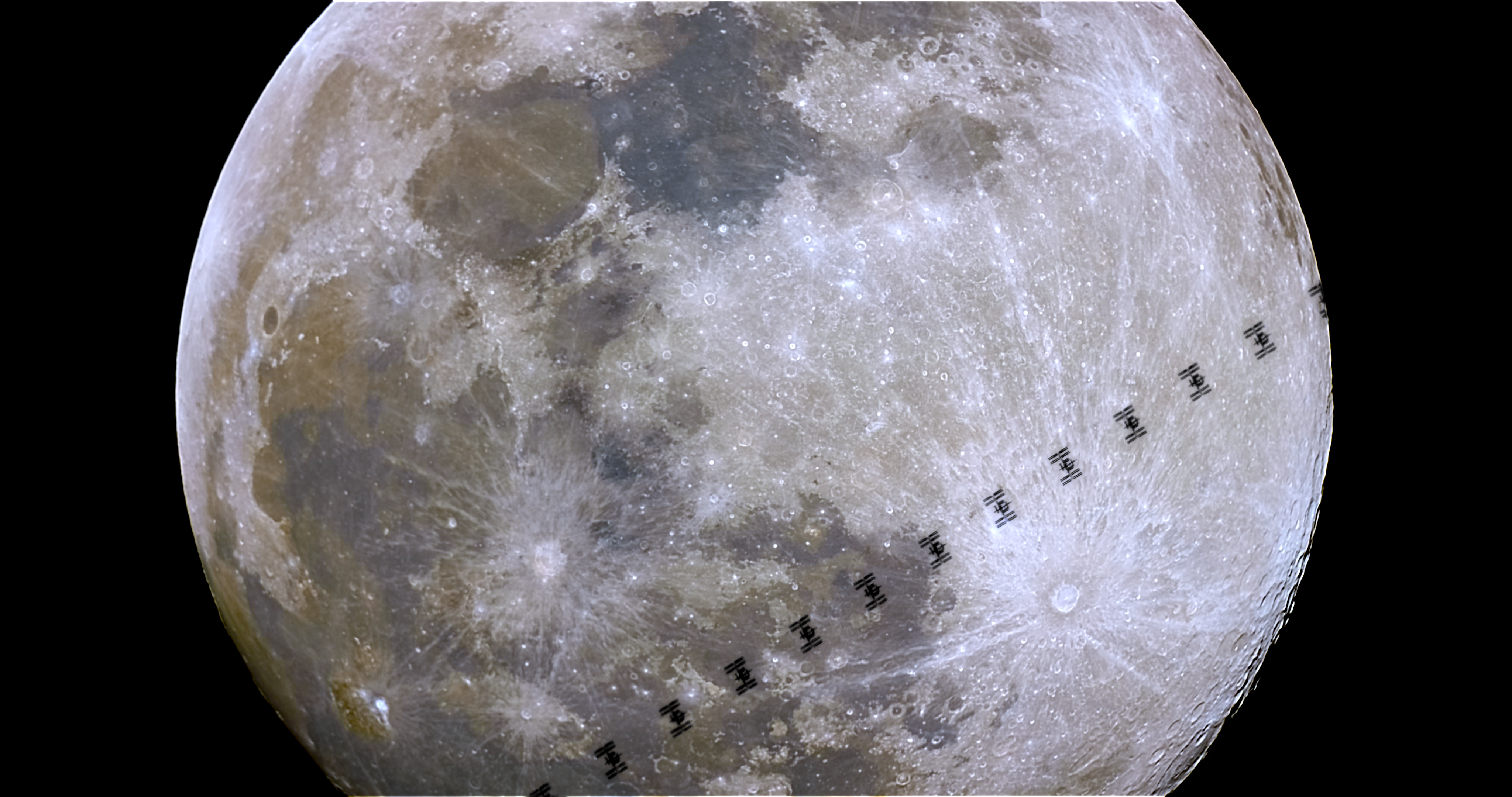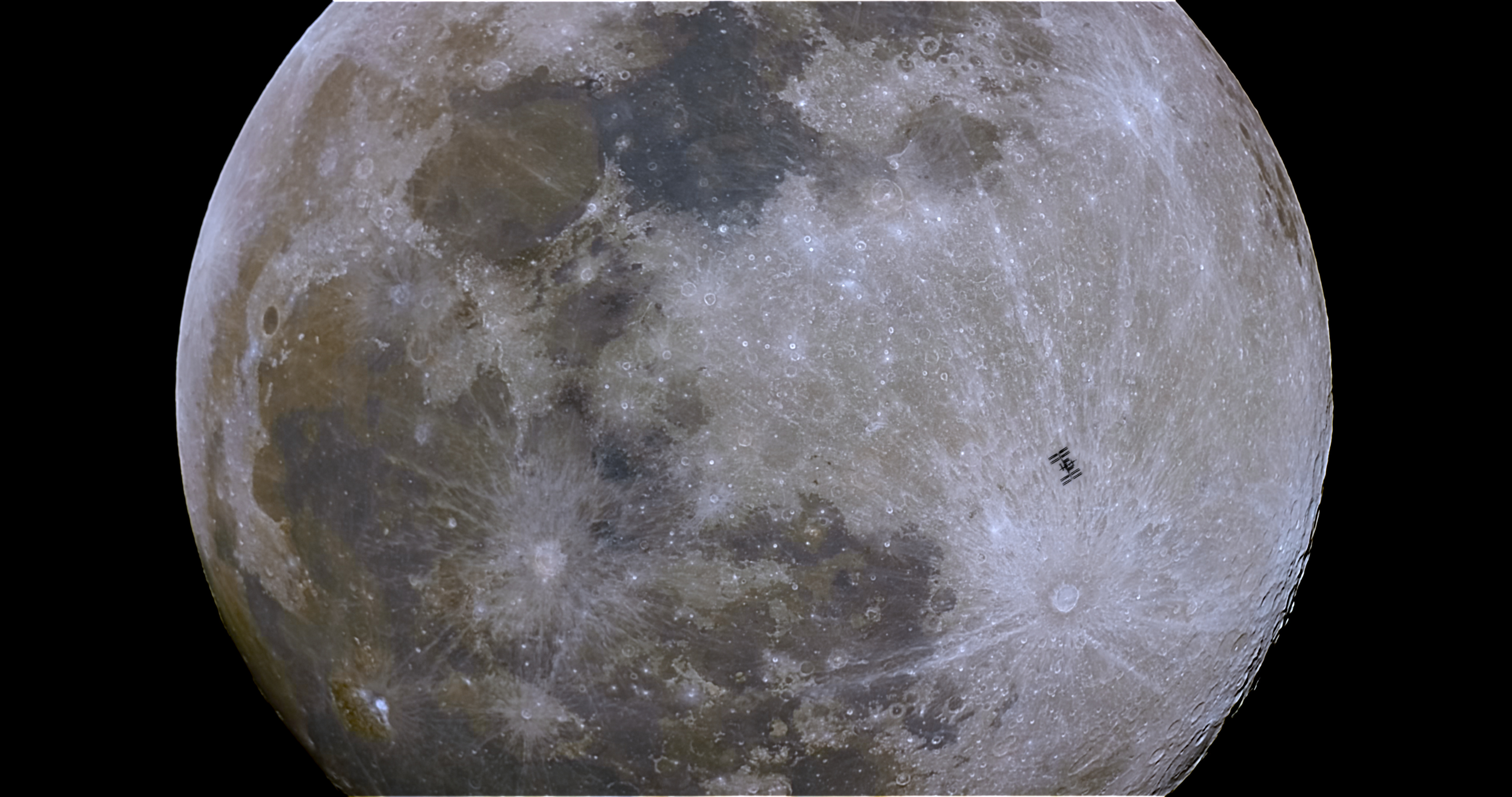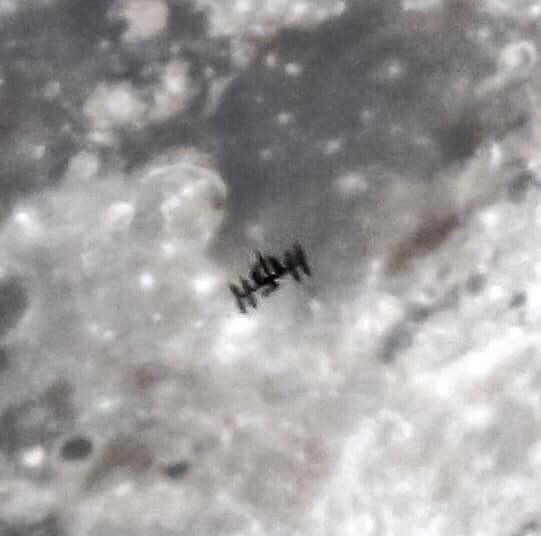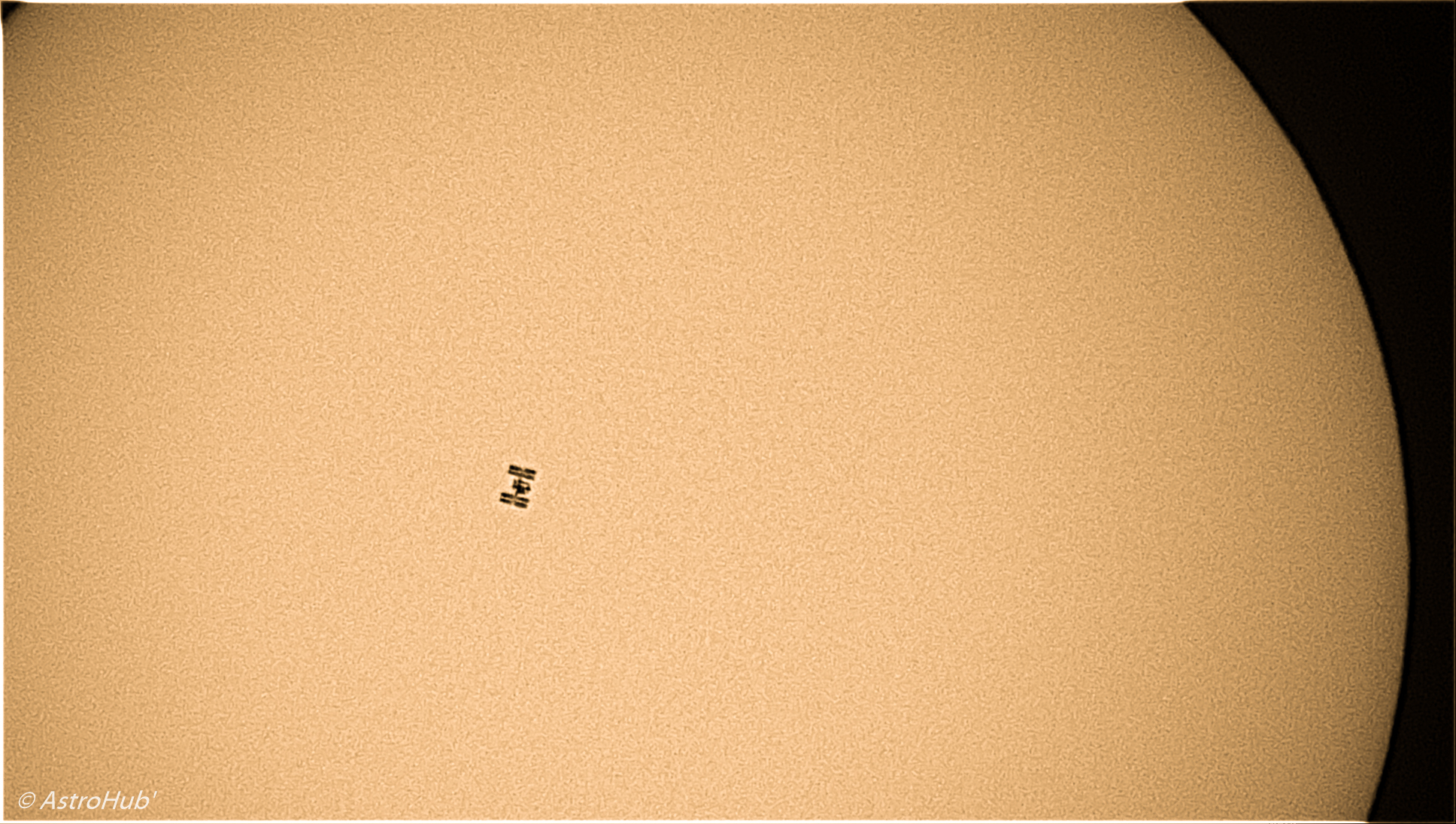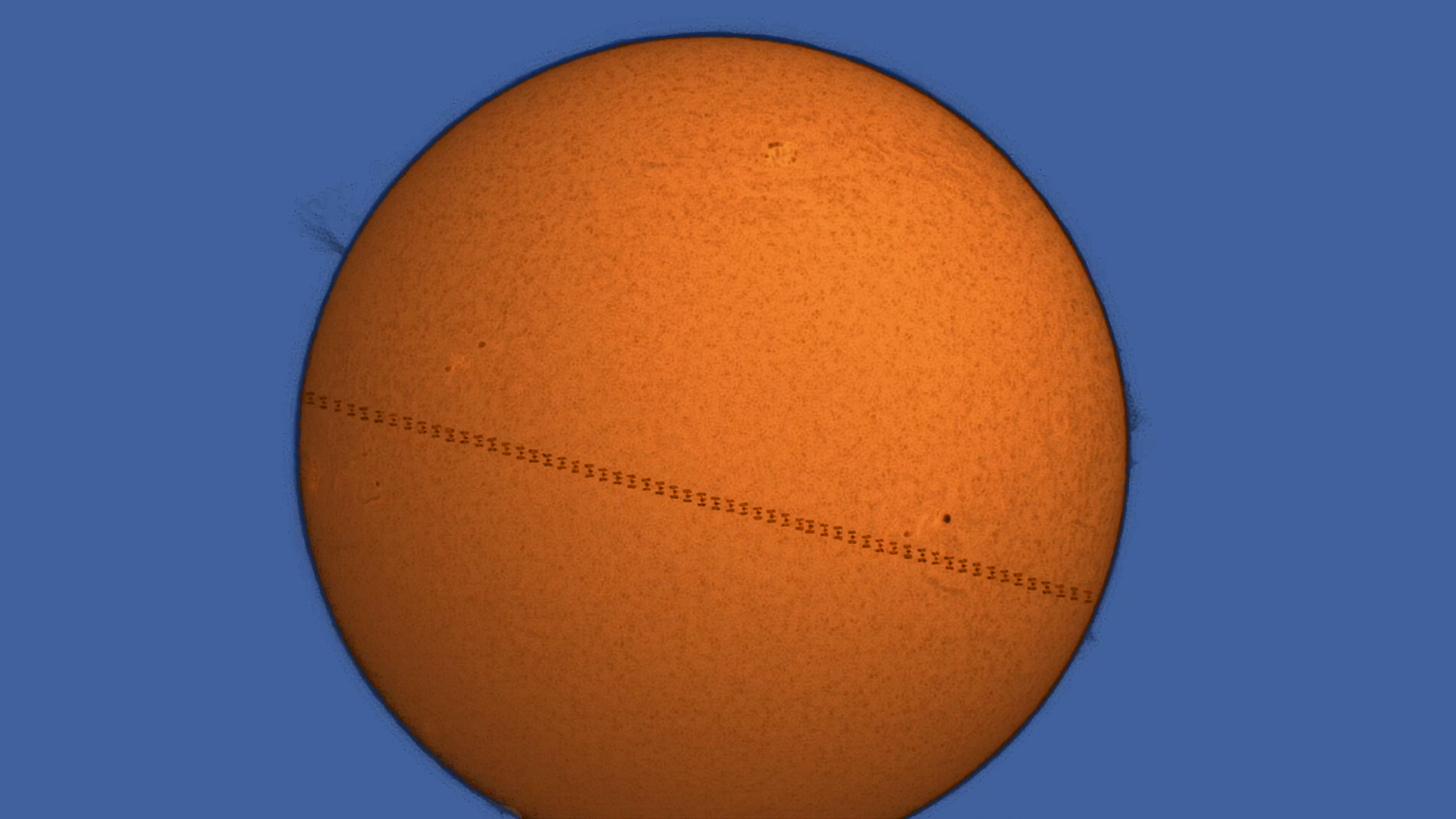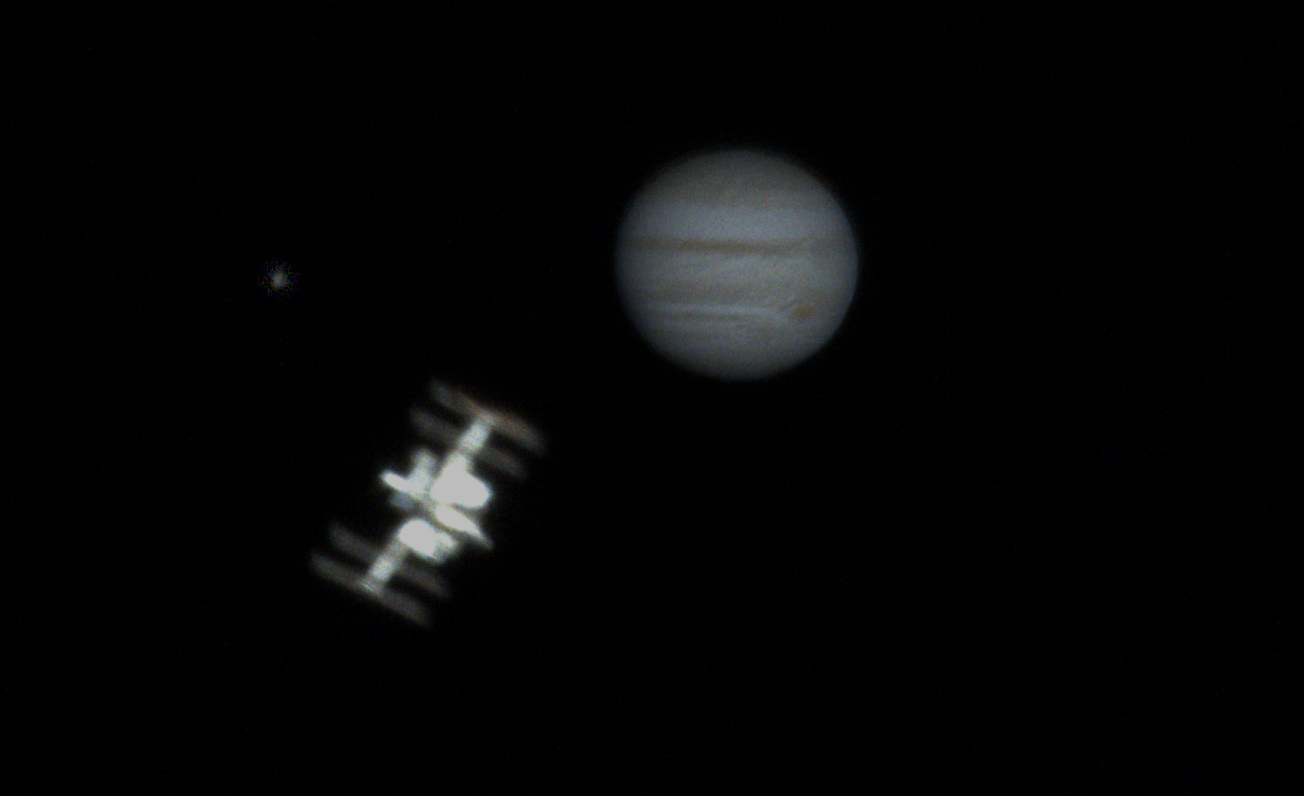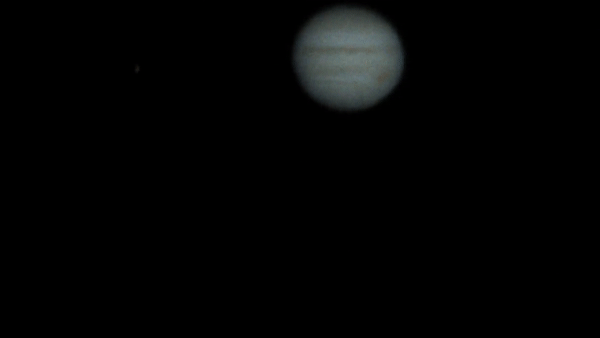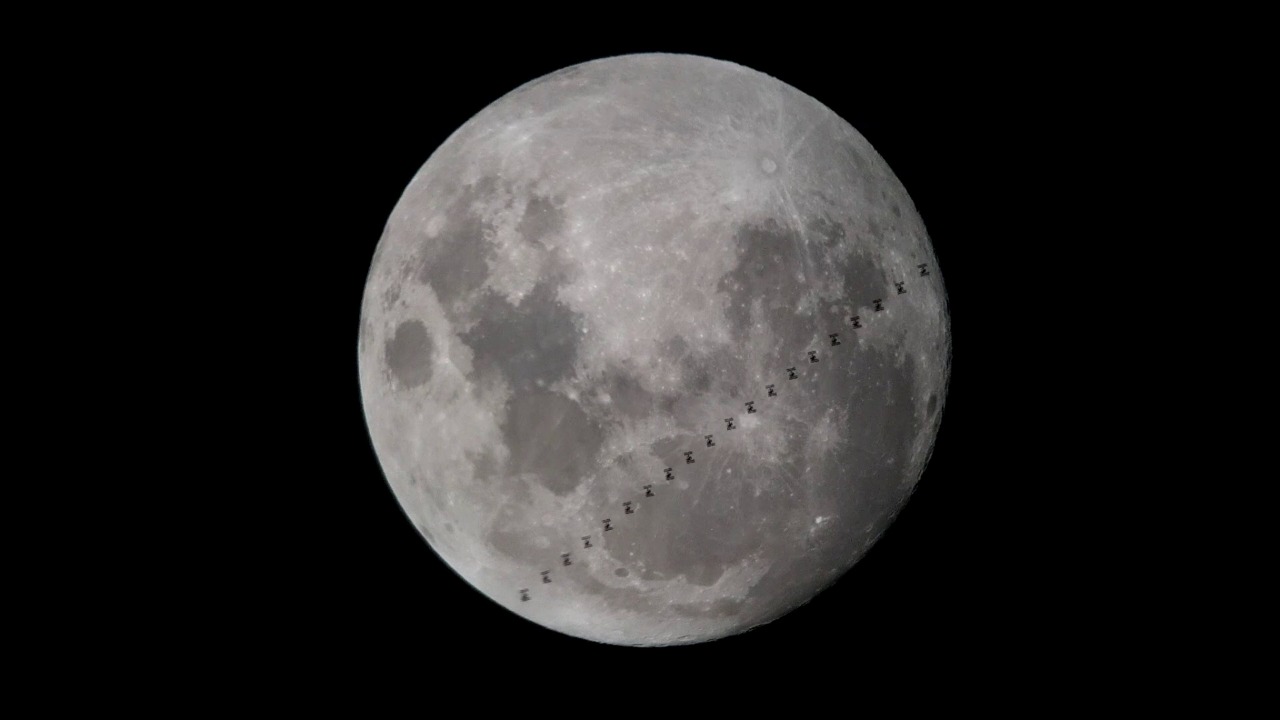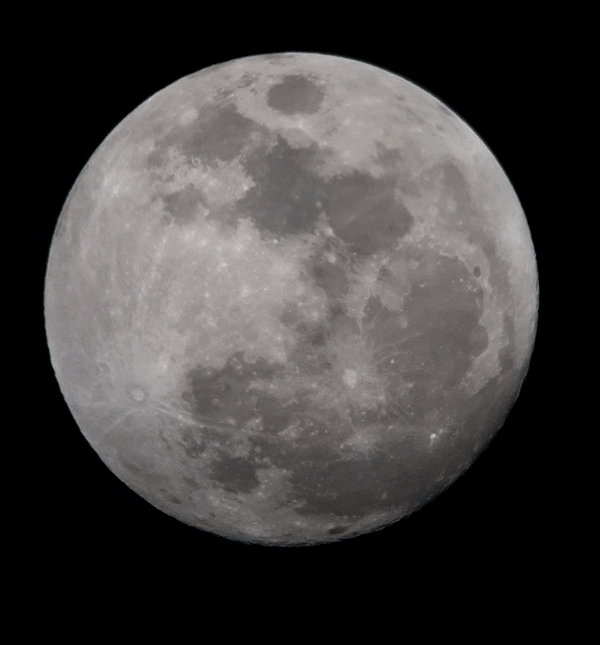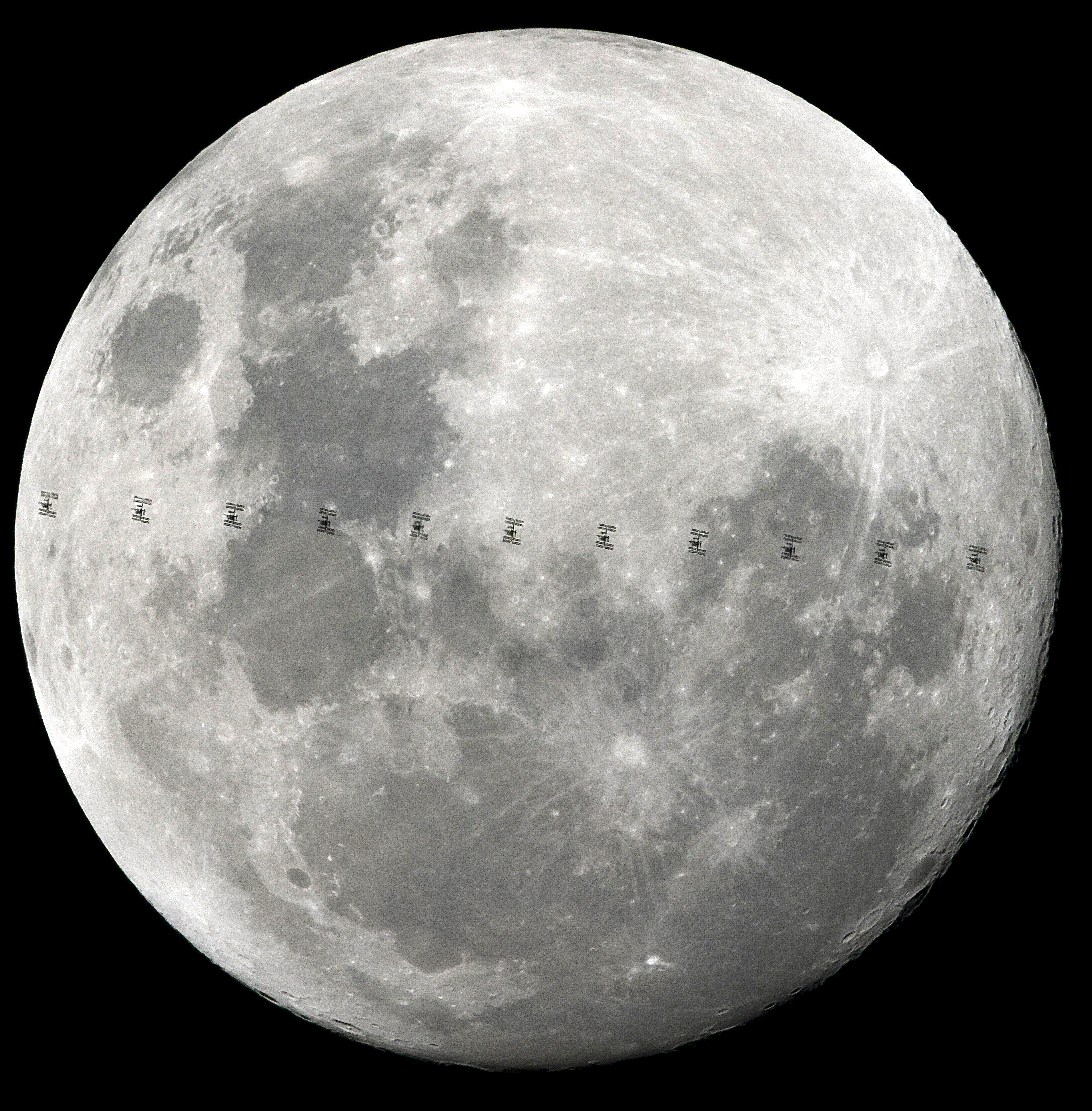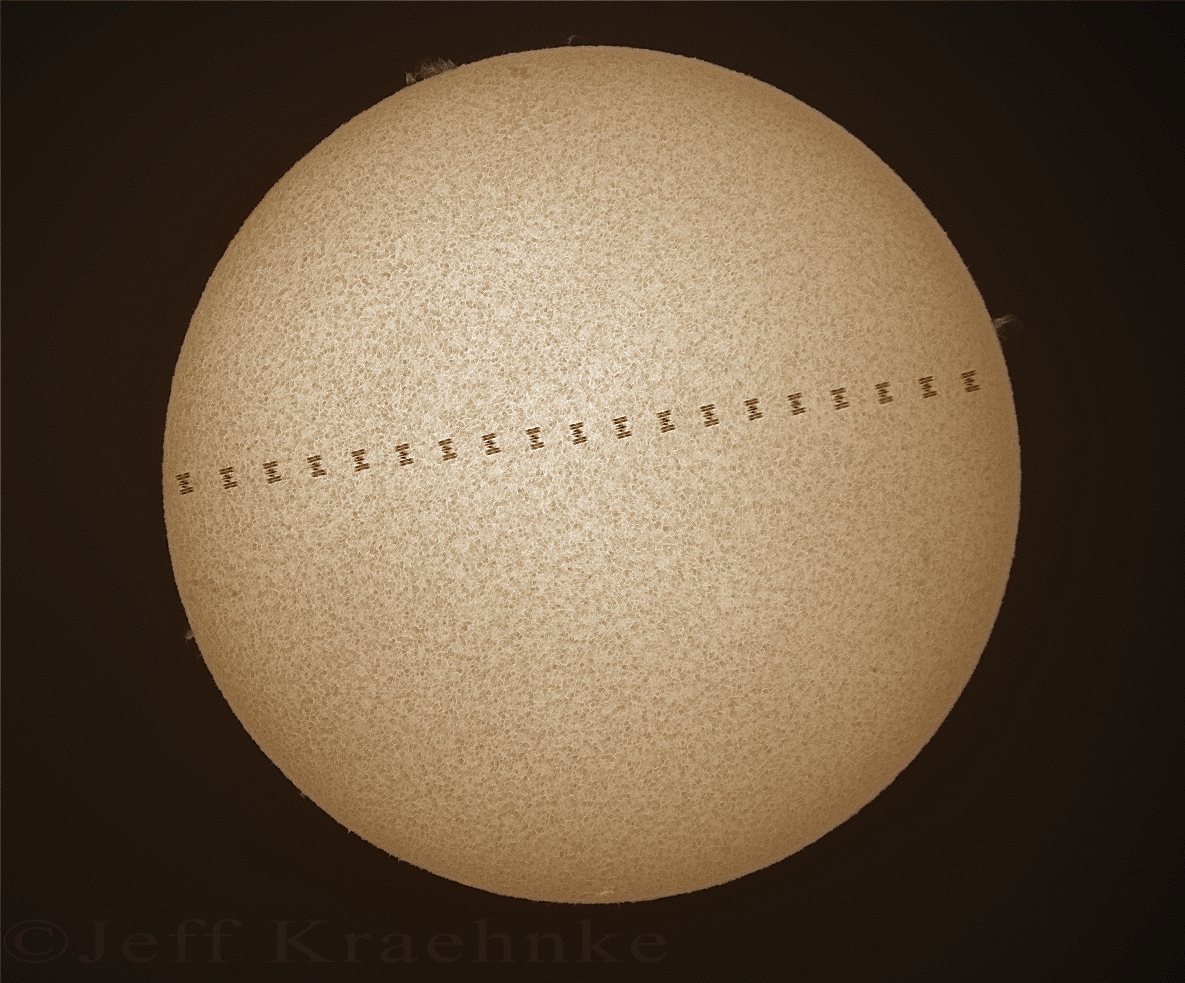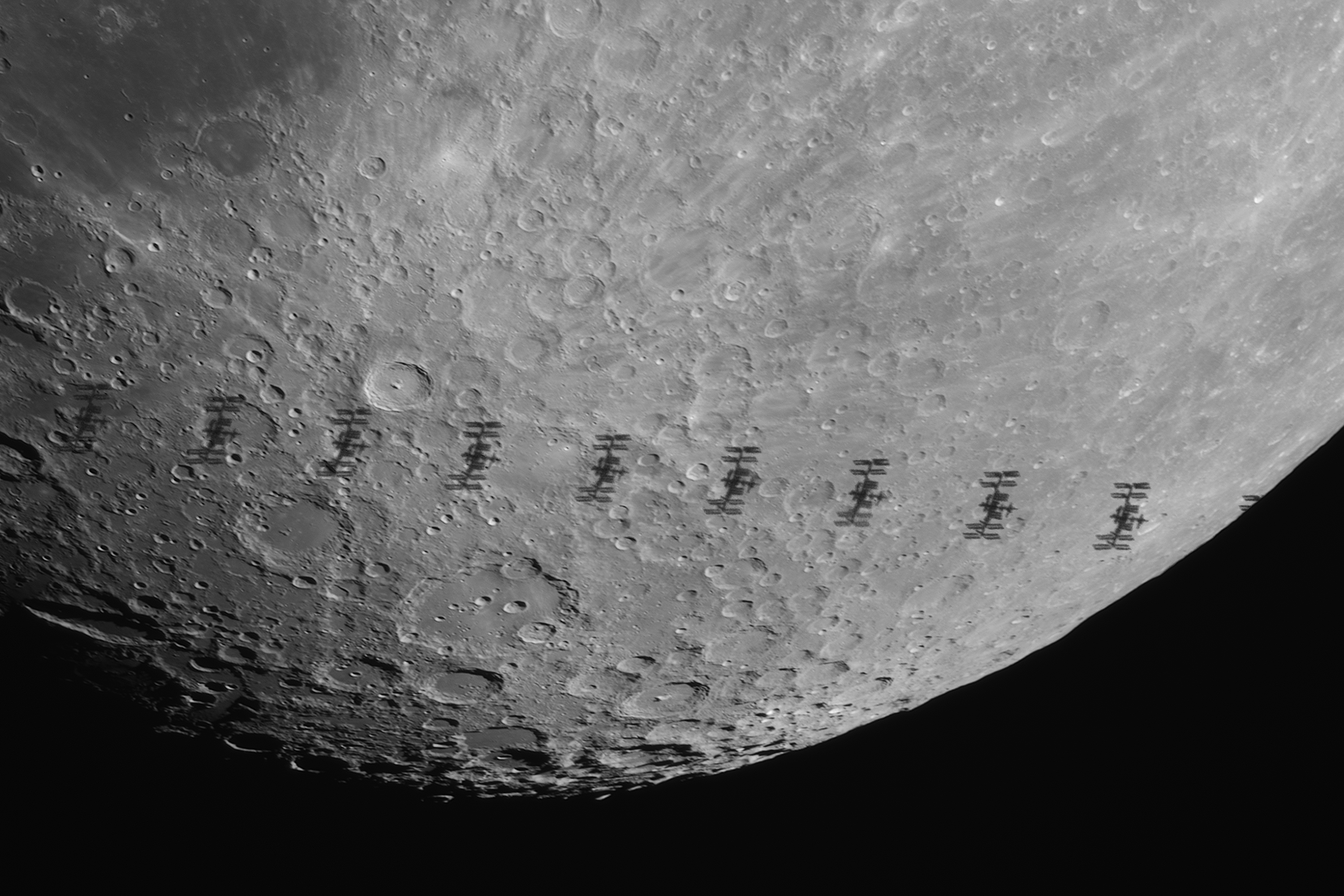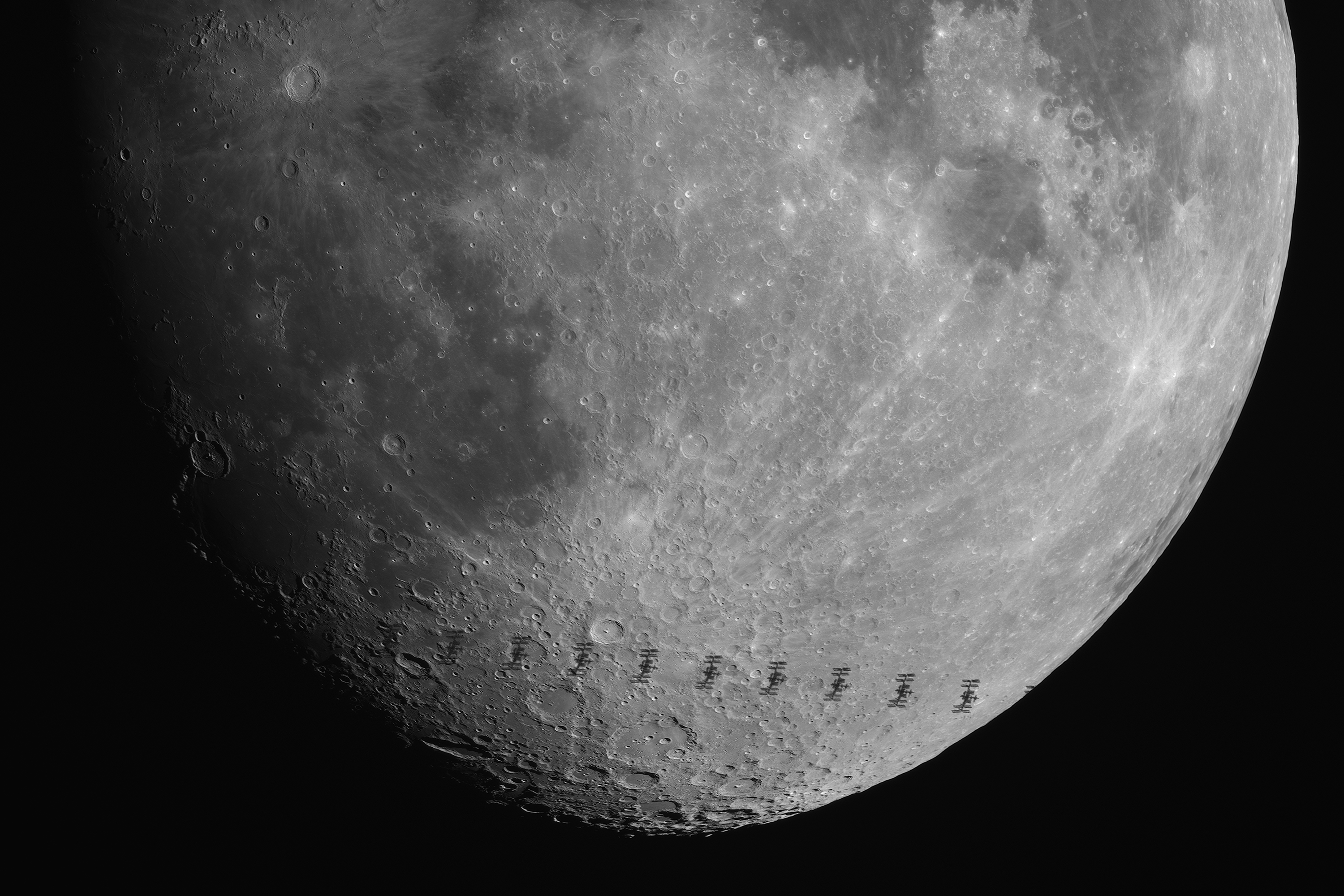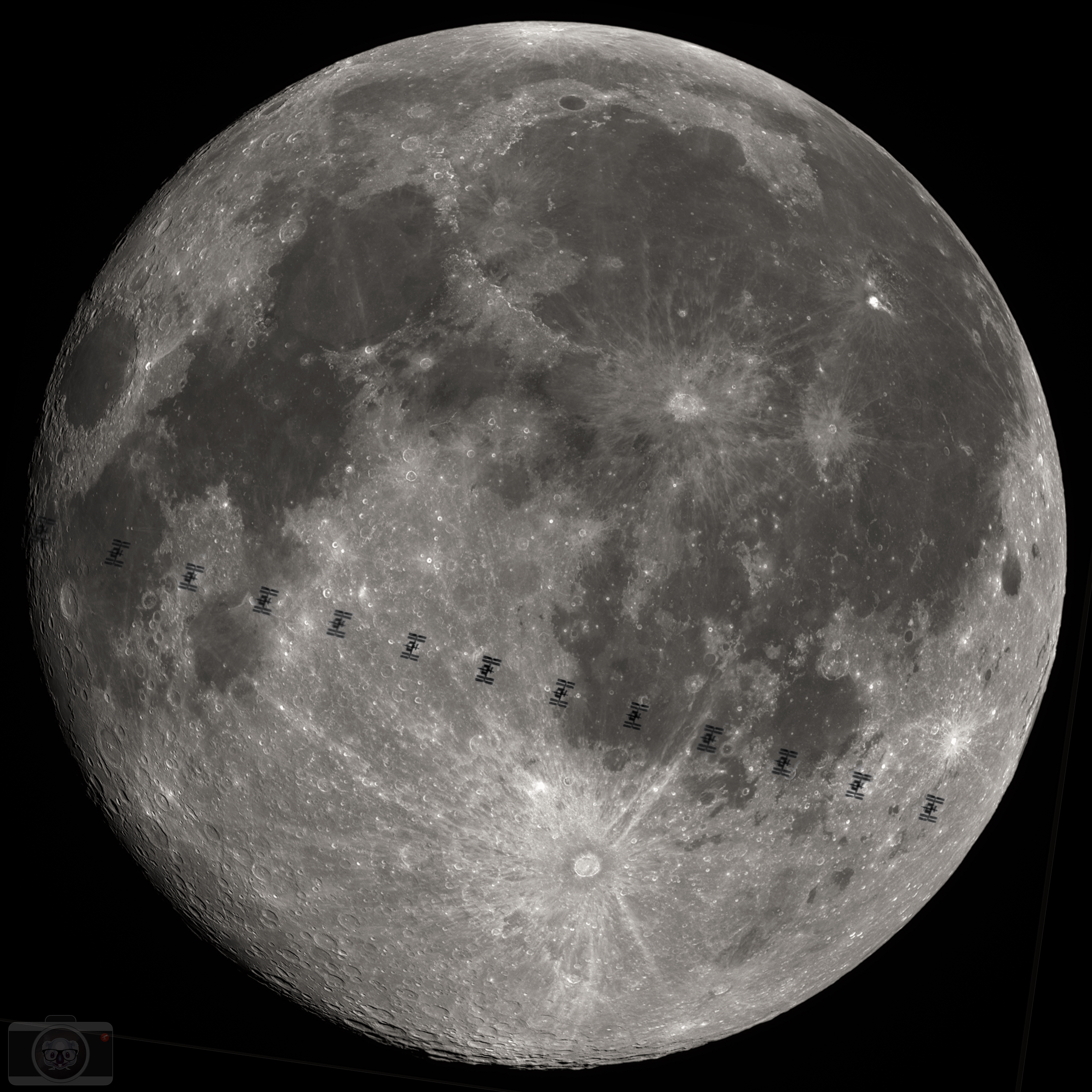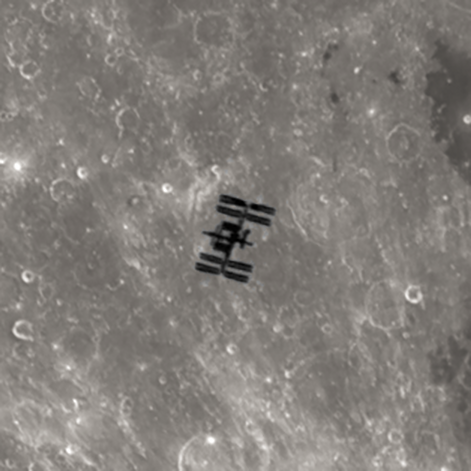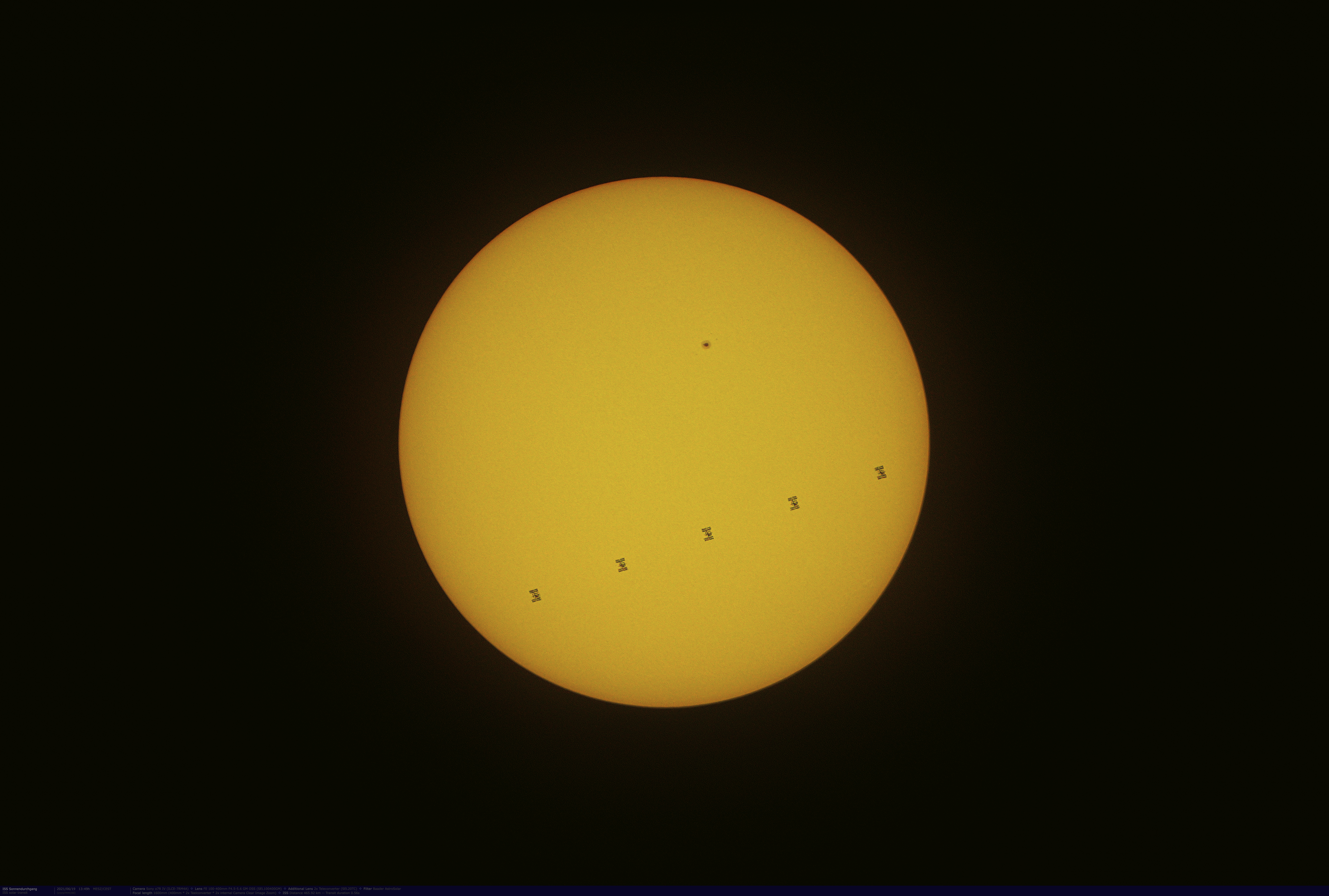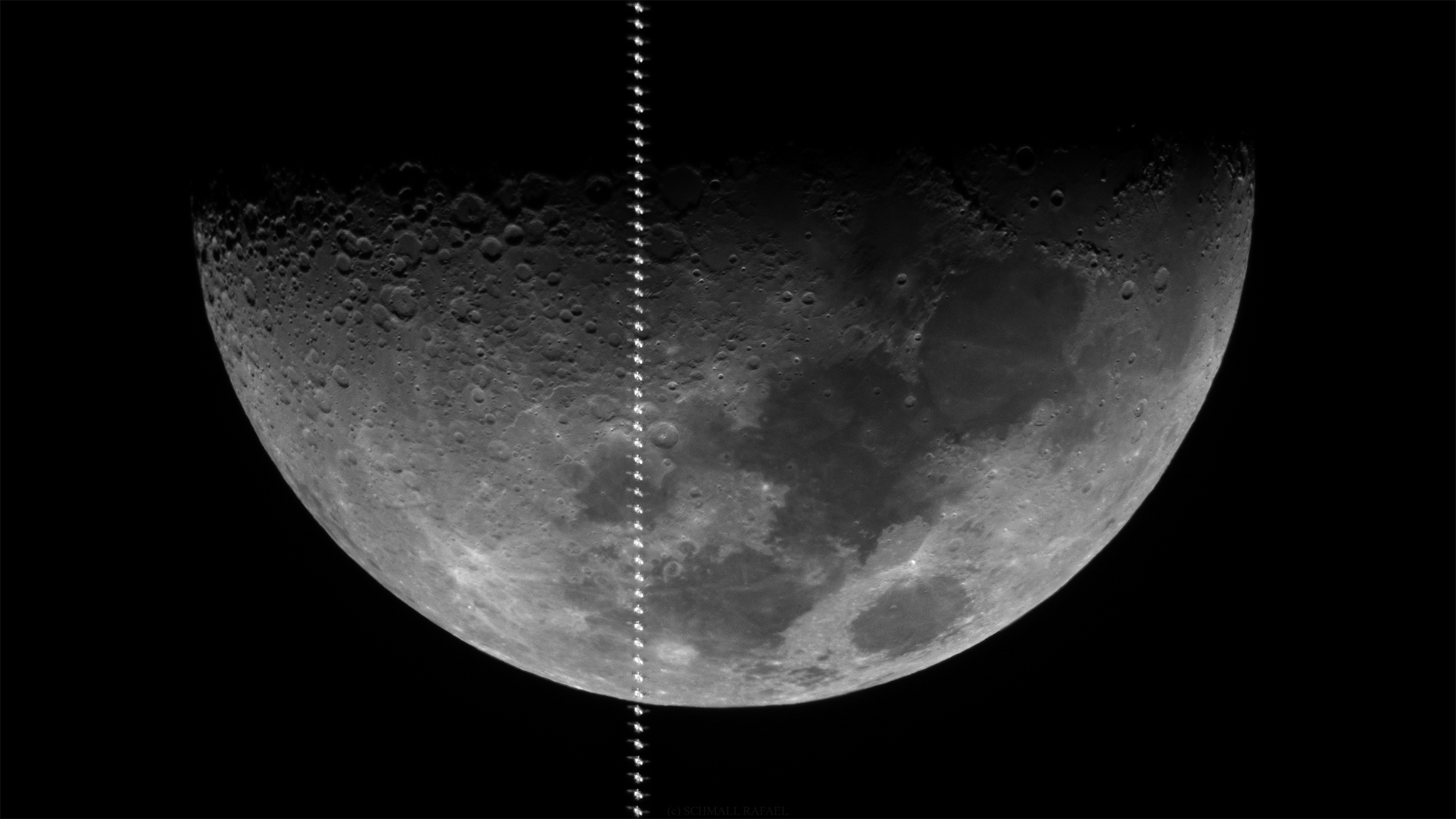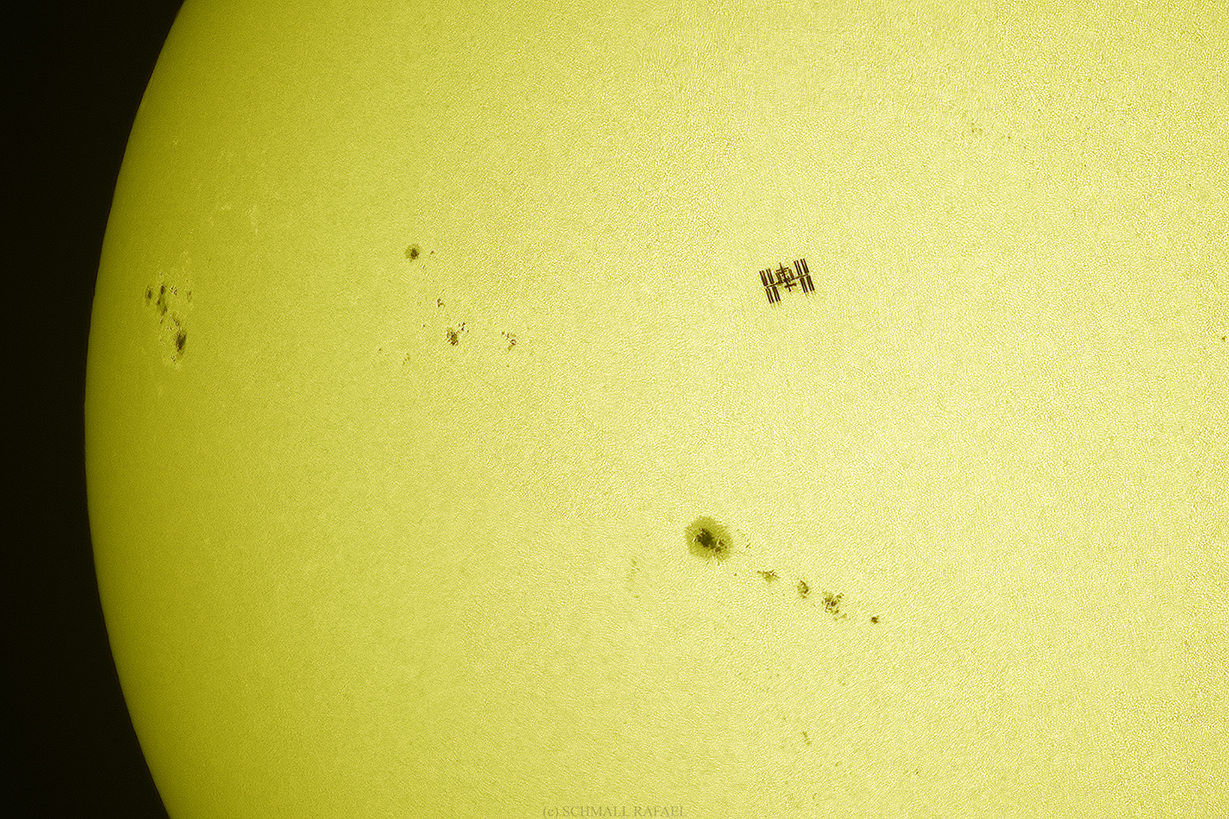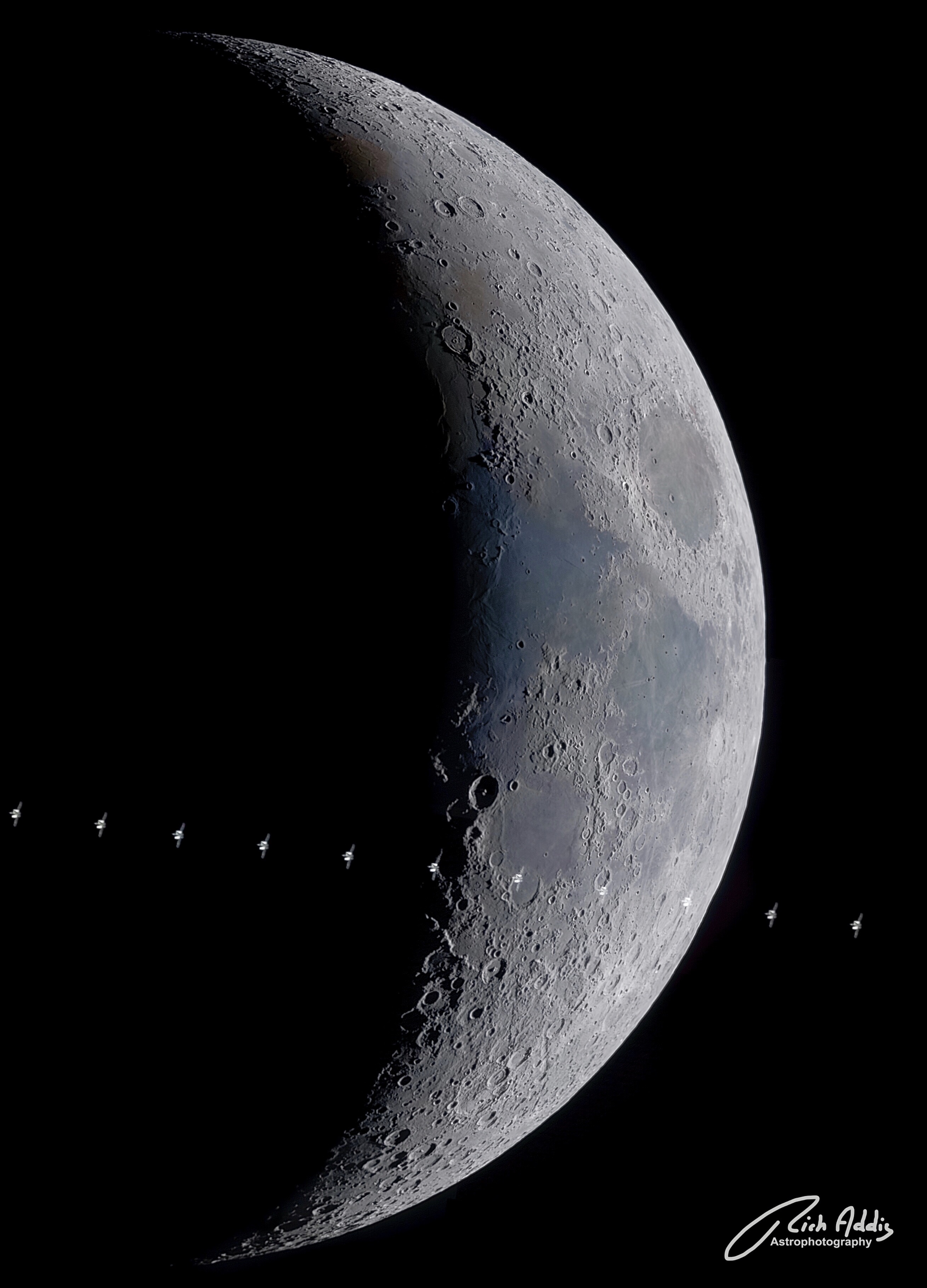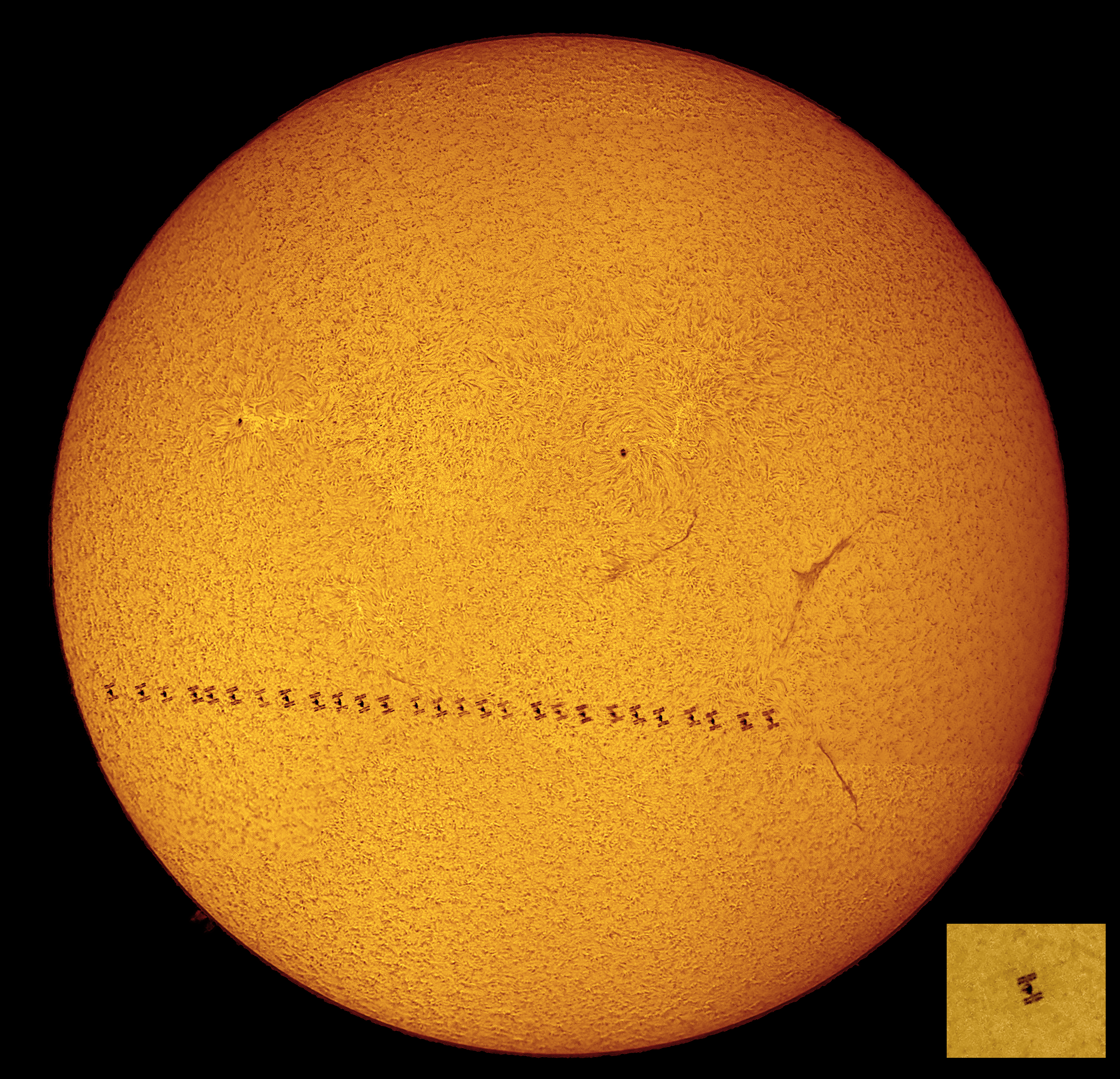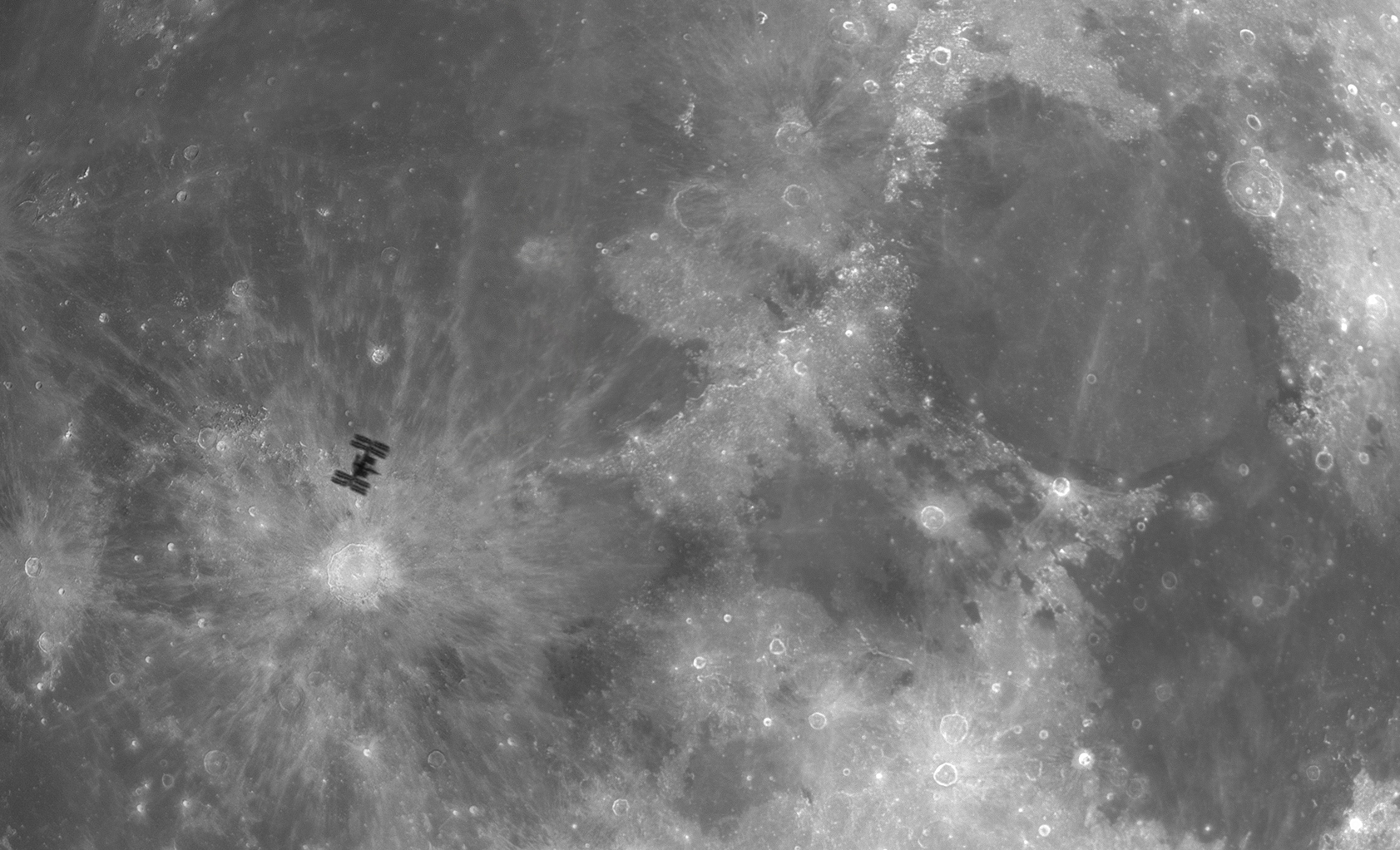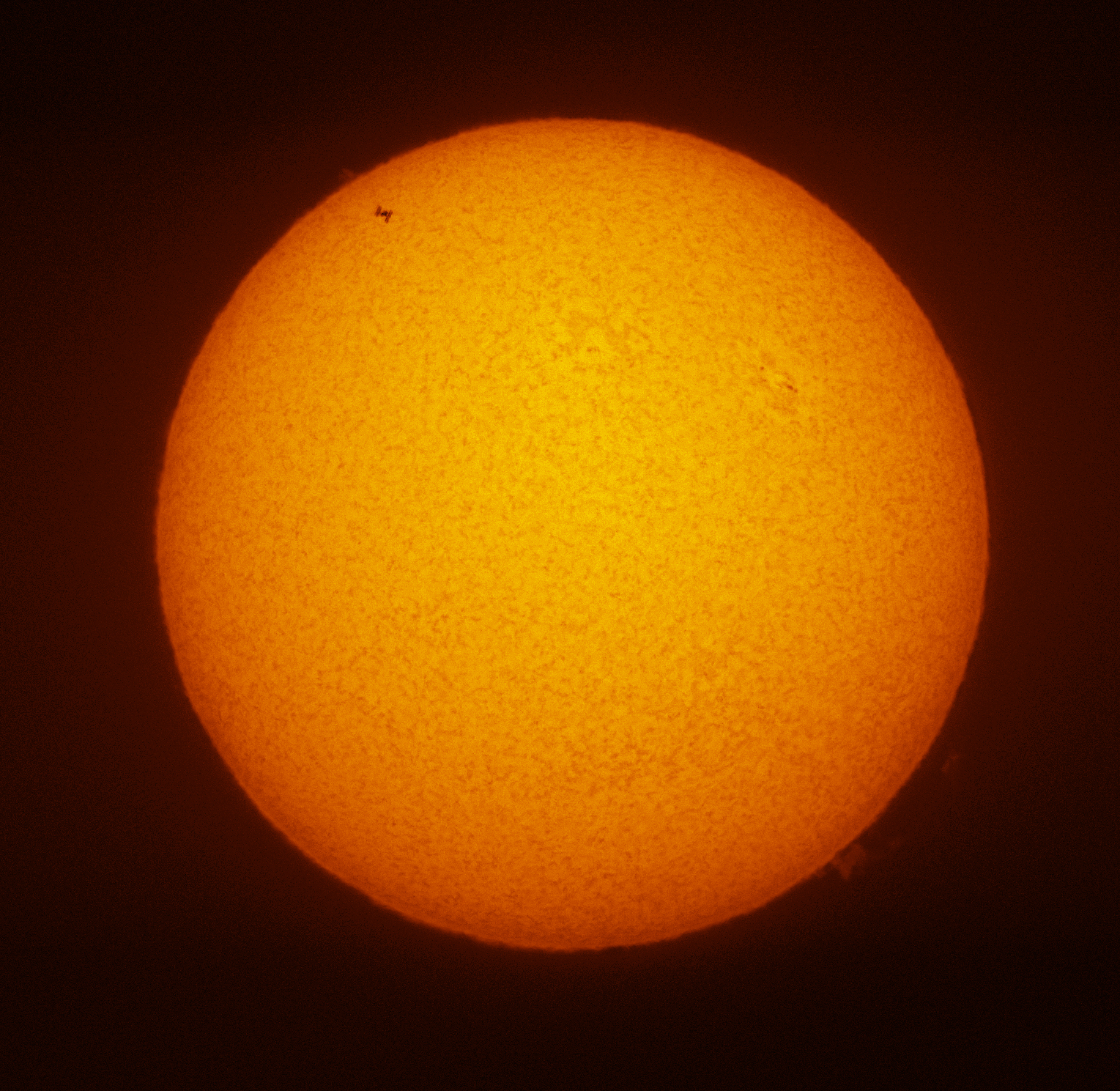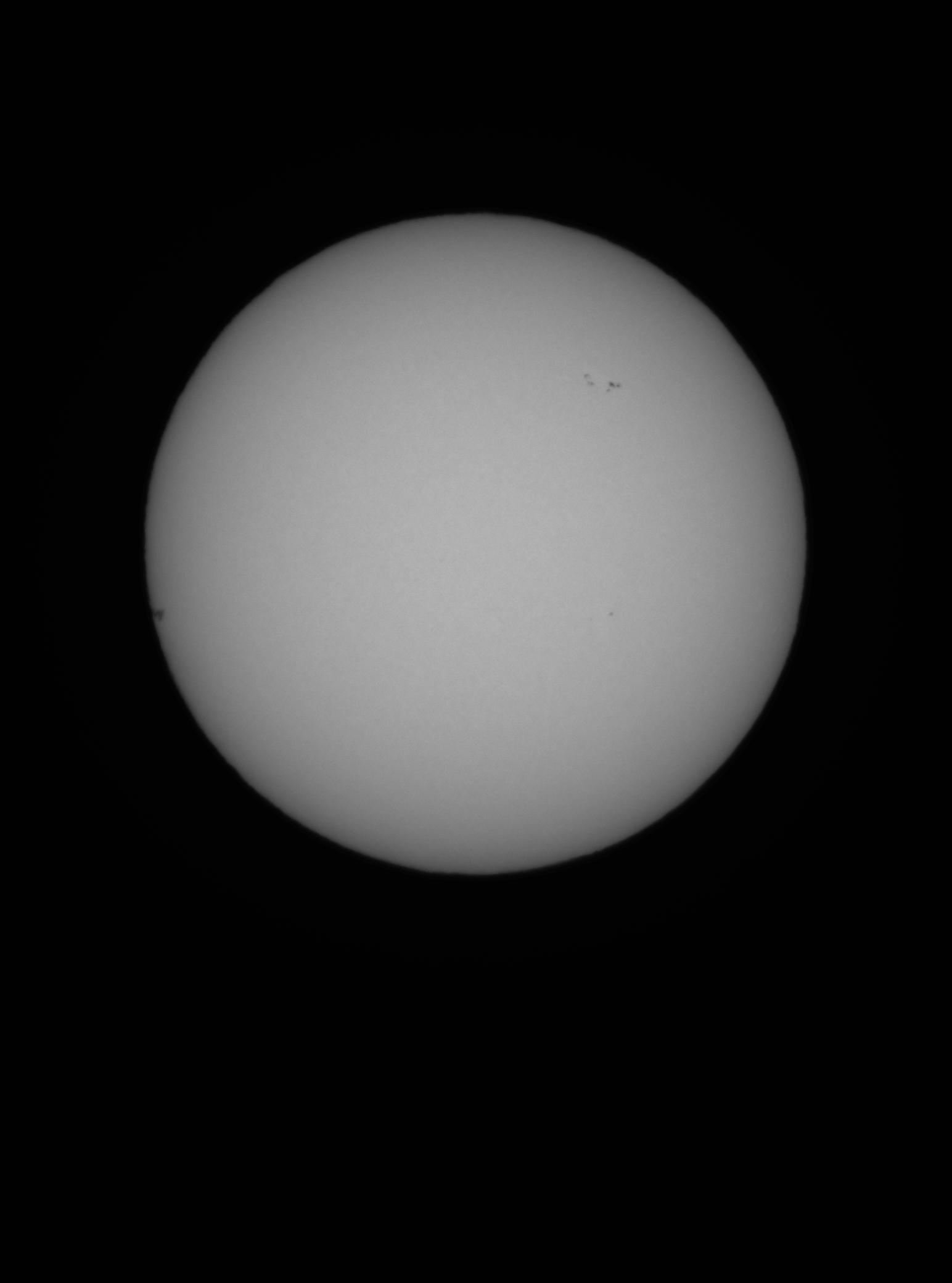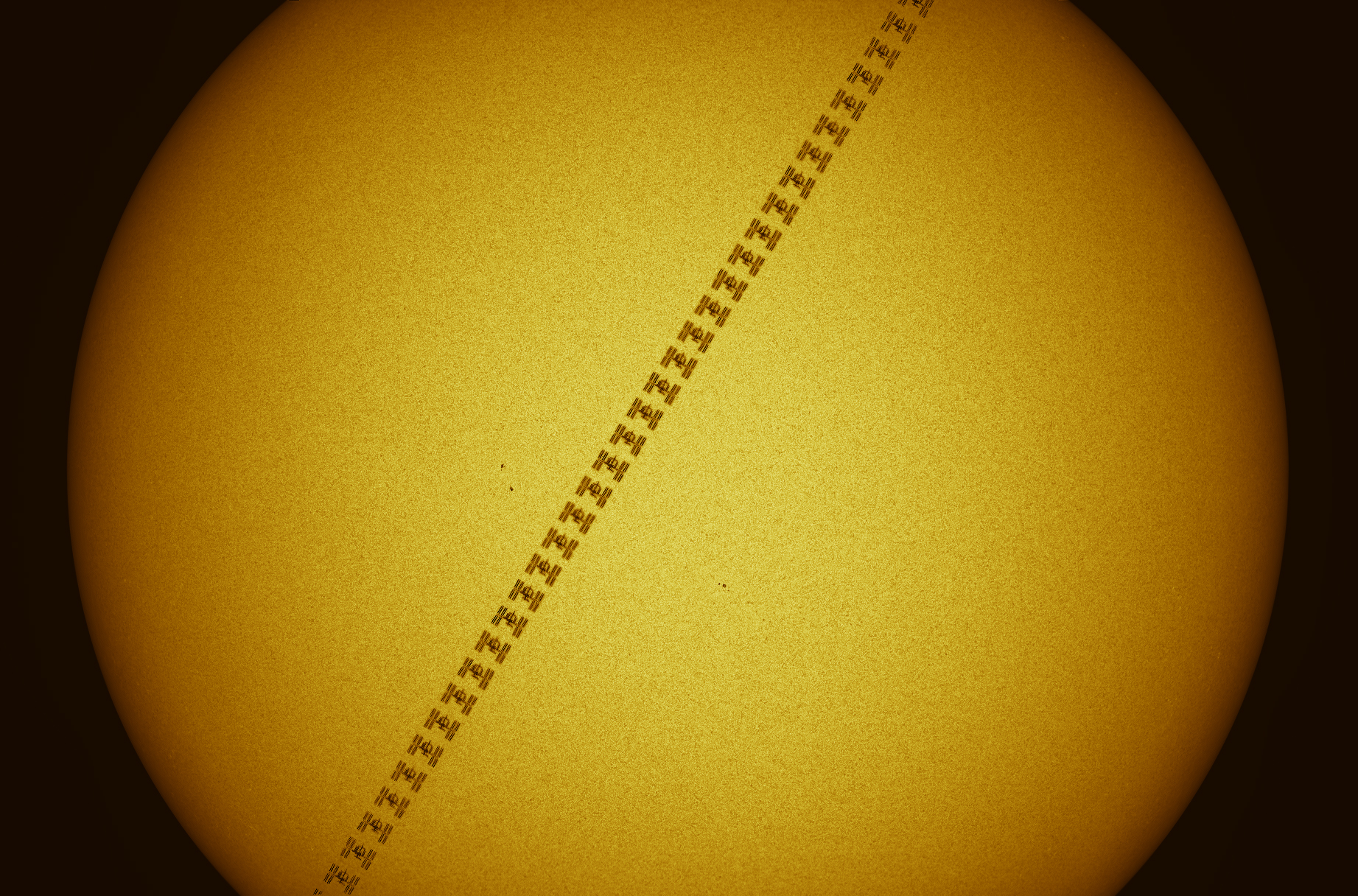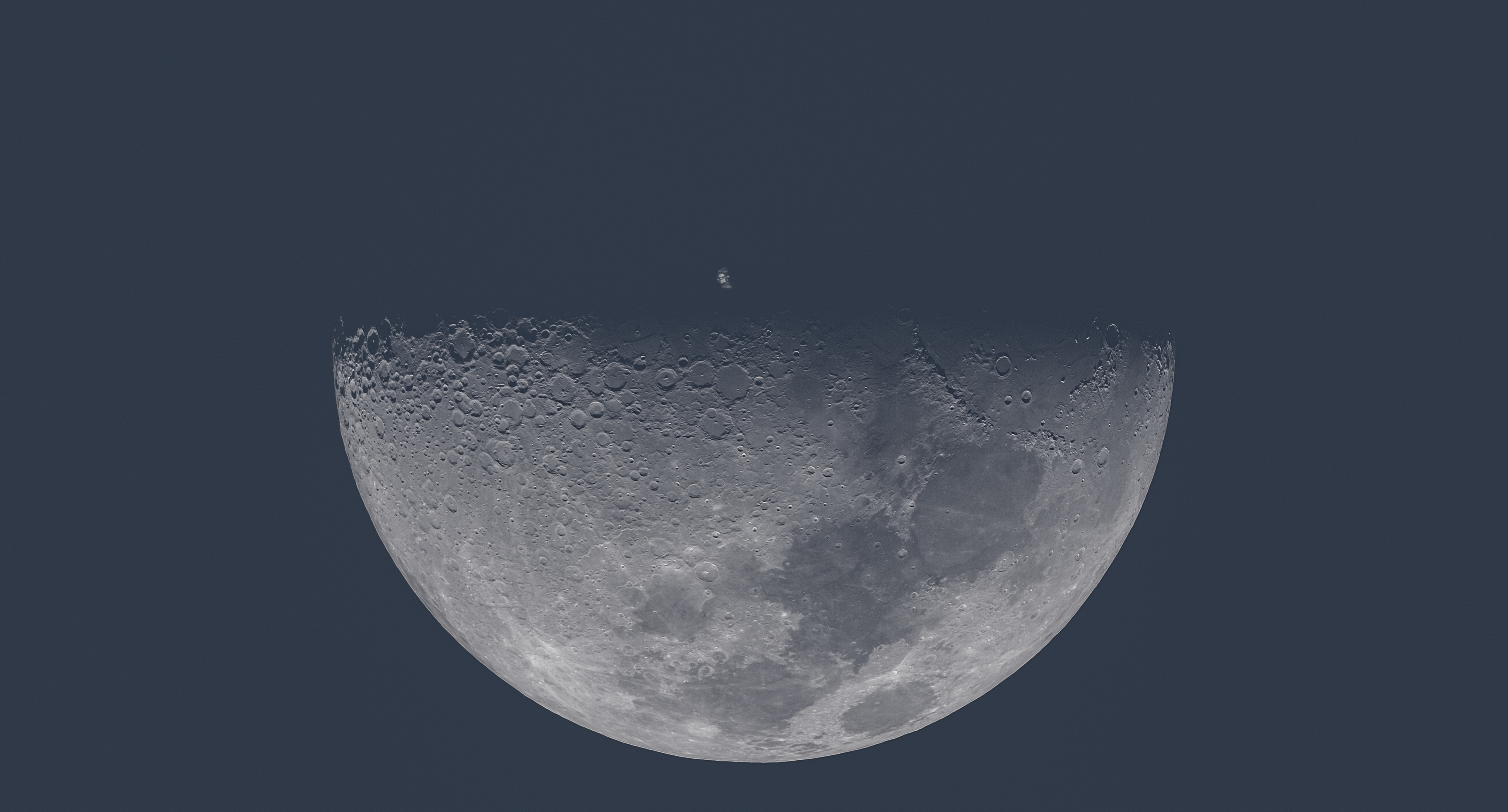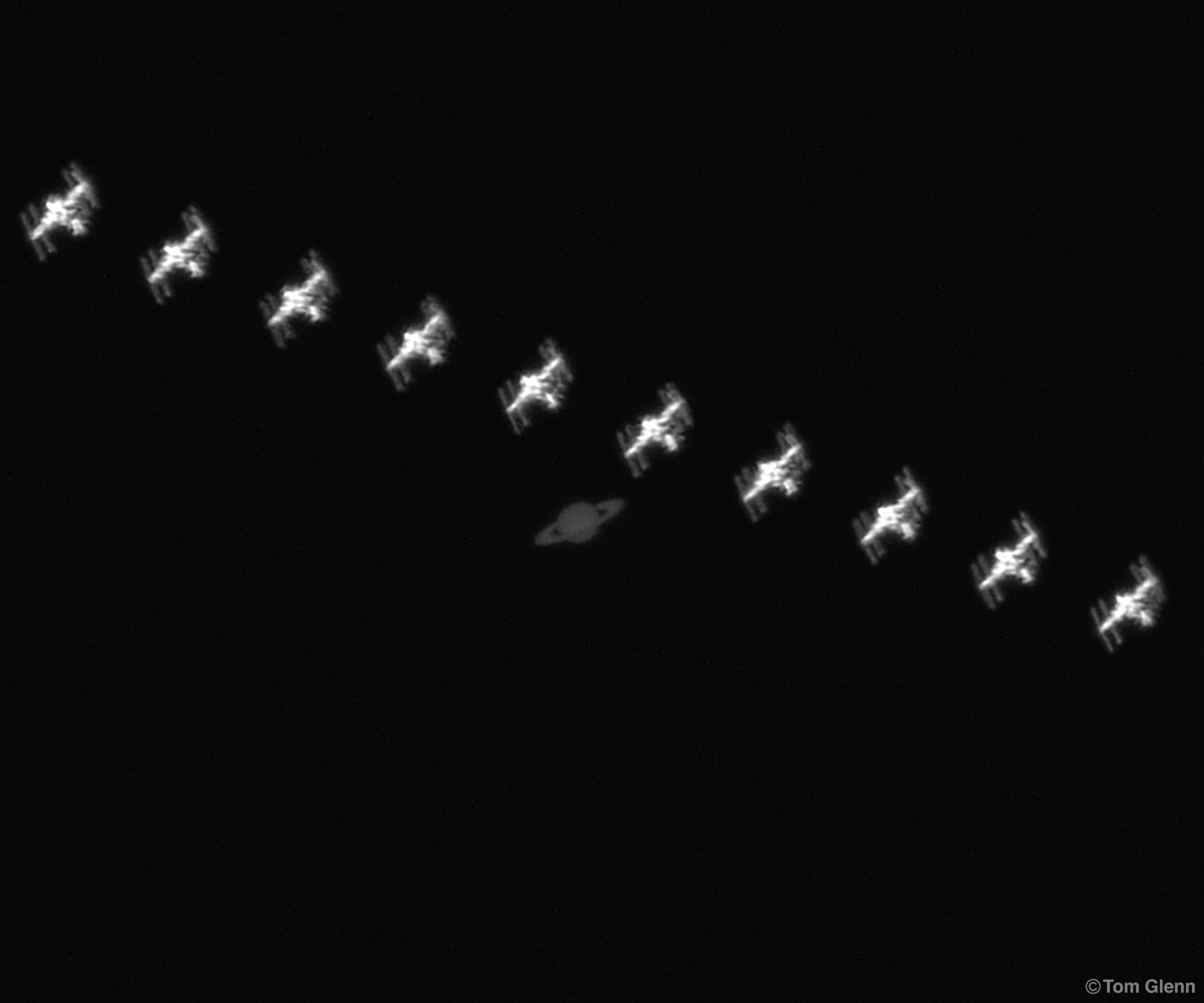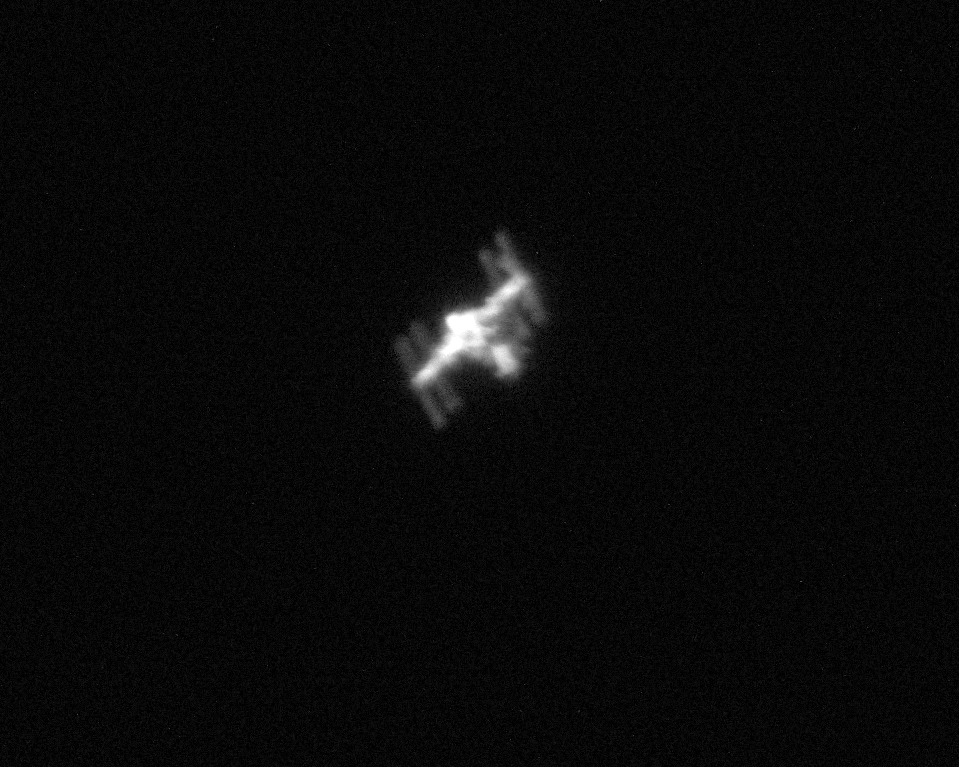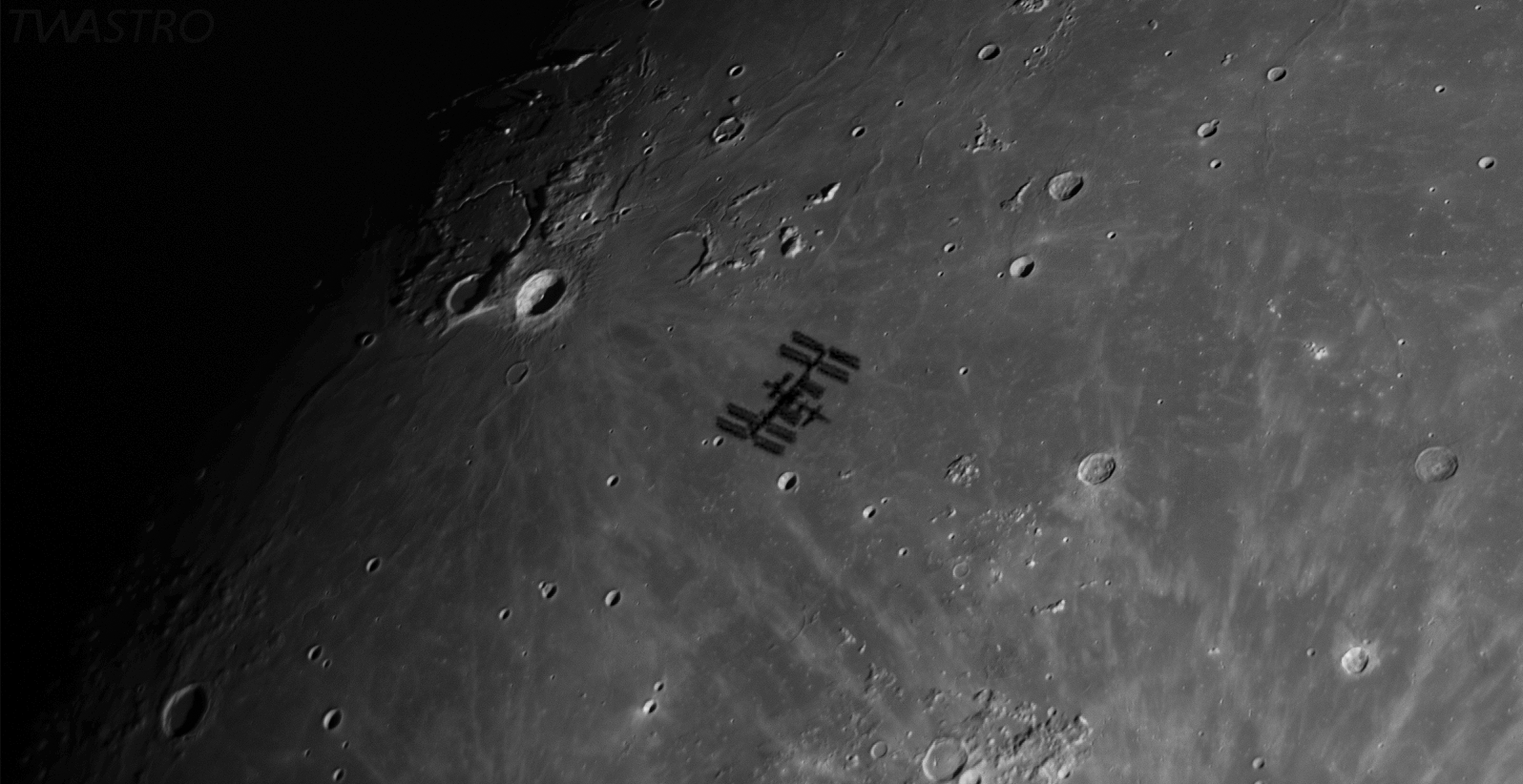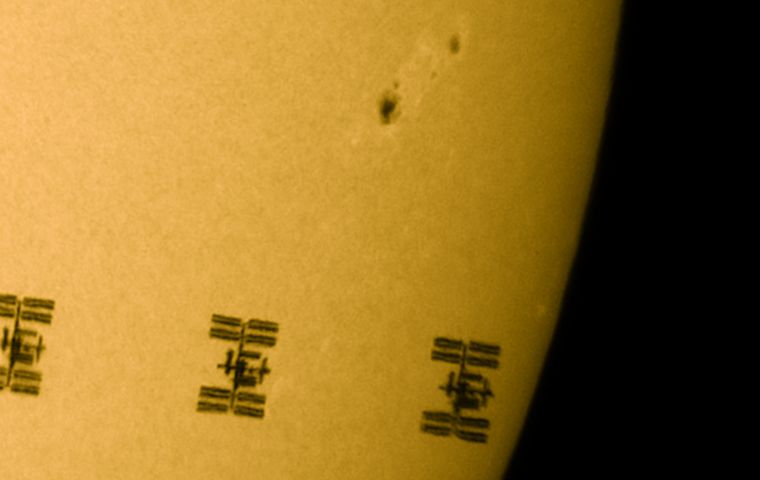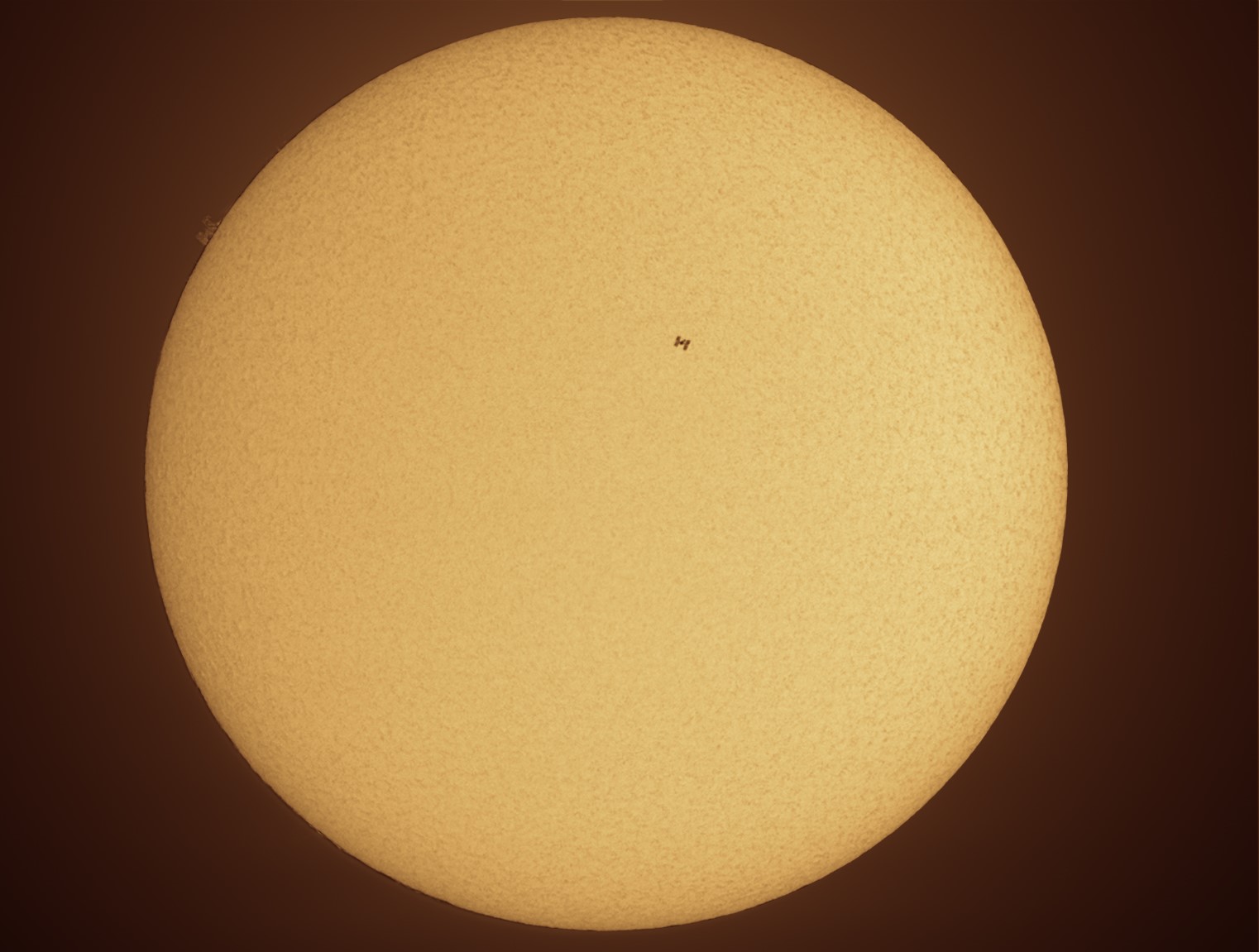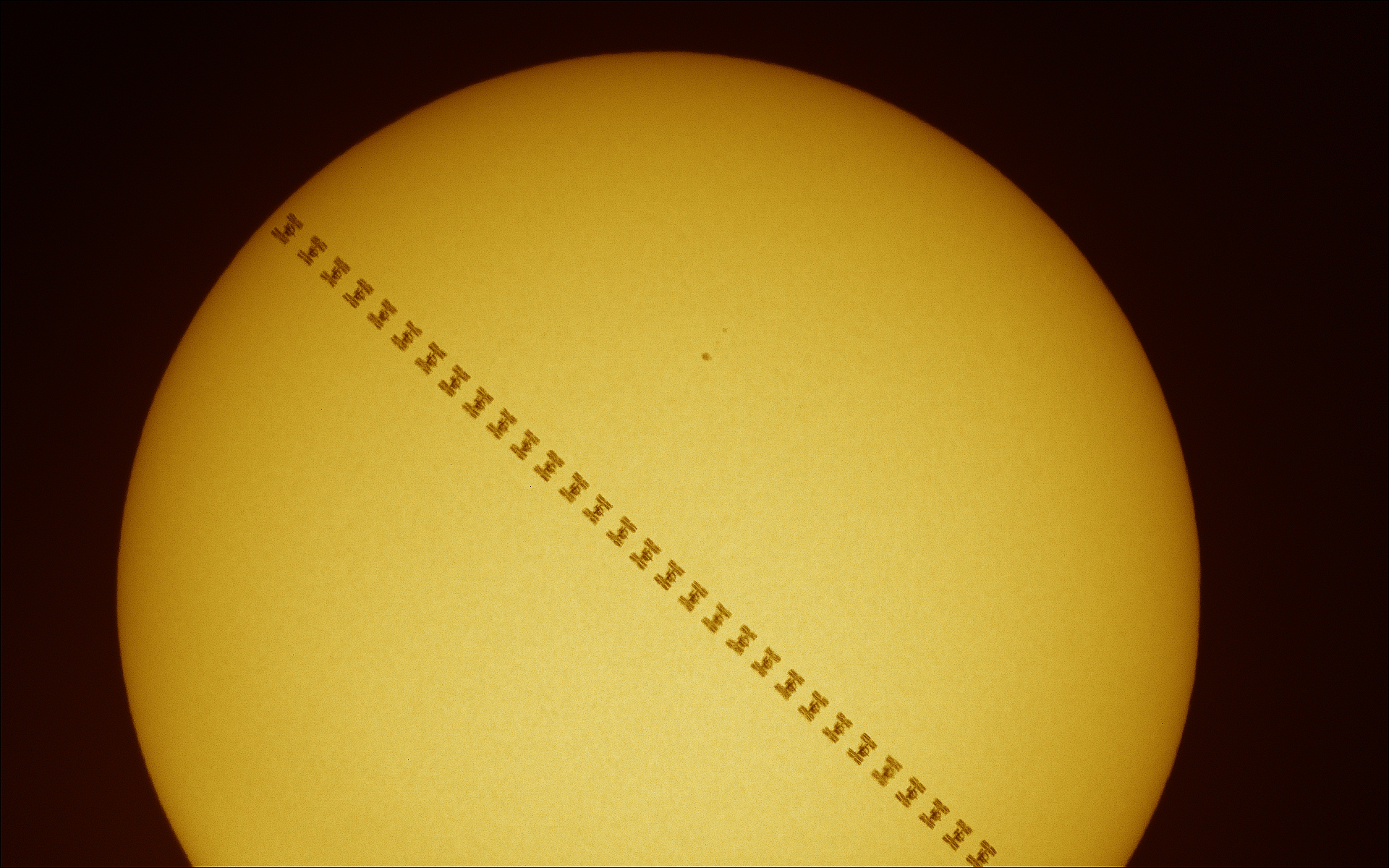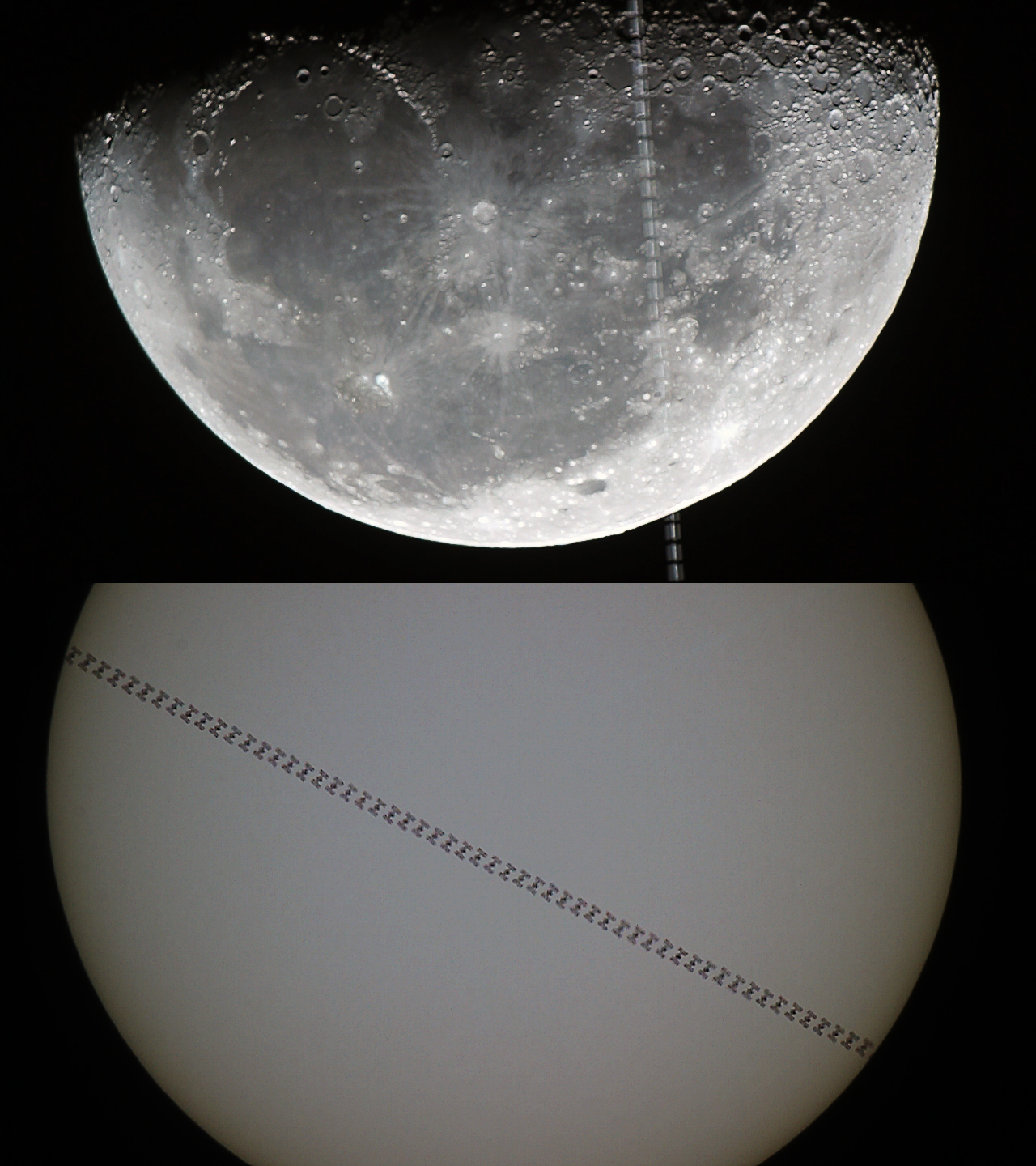Ala Sahin, Andrew McCarthy, Antonio Vilchez, Bryan Goff, Christian Fröschlin, Christopher Becke, Dana Weisbrot, Denis Huber, Dennis Mellican, Gábor Hődör, Graham Cluer, Grant Petersen, Ian Griffin, Jeff Kraehnke, Jens Hackmann, Luca Bartek, Nullpunktnix, Péter Szalai, Rafael Schmall, Rich Addis, Roger Hutchinson, Róbert Attila Horváth Hozé, Sage Gray, Shawn Johnson, Simon Tang, Tom Glenn, Tom Jones, Tom Williams, Tomasz Urbańsk, Tomo, Zack Stockbridge, Zsolt Fejes
(click on names above to jump)
How to Submit your photo?
If you think you have captured something incredible and International Space Station related, please send it to the following email address: metrolinaszabi@gmail.com
Please make sure your post contains the following:
– time/date the photo/animation was taken (UT)
– equipment
– flyby details (max. elevation, from – to times, brightness – these are optional details, not compulsory though but welcomed)
– write in brief story (if possible, not compulsory though)
Ala Sahin
On the 29th of March 2023 18:45 UT, I have captured my first ISS Moon Transit. This was captured from my backyard in Dubai, United Arab Emirates. I used a Lomo 80mm F7.5 apochromat telescope coupled with a APM-TMB ED barlow working at 1.5x. This gave a 900mm effective focal length.
The camera is Player One Apollo-M MINI (IMX429), 84 frames per second, gain=245, exposure=1.0ms.
The ISS size was 44.64″, 619km way and 40 degrees above the horizon. I am so thrilled this worked so well given it was my fist attempt; beginner’s luck I think.
Andrew McCarthy
(His instagram profile)
The ISS winked at me this morning!
At 2:44am this morning, I positioned myself so the ISS would pass between the moon and I so I could get this shot. What I didn’t expect was for the ISS to look so different than usual. Turns out, half the arrays are at an angle in prep for an EVA, so I got a cool, rare shot of a mission happening over our heads! And to top it off, right over my favourite lunar crater. What a world.
I have a write-up of how this shot (and other ISS shots) are planned for and captured on my patreon if you’re curious. They take a fair amount of preparation but anybody can do them! I also shared two videos from this transit so you can see how it looked in real time.
EdgeHD800, Zwo ASI178mm, colour capture afterwards with a Sony A7ii, Hobym traveler mount
Taken in Elk Grove, California on 02/28/2021
This morning the International Space Station briefly passed between the moon and a place near my home in Elk Grove, California. I found a good spot alongside a public road to set up my equipment, and captured the ISS on the terminator line of the daytime moon. This is my composite image of the event, which includes the image of the transit, which has been blended with a capture of Earthshine captured that same morning, to show the faint dark side details as well as the lit side details.
Taken in Elk Grove, California, between 5:30am Pacific and 9:32am Pacific on 10/14/20
Here’s a my image of an ISS transit last night. This was taken at 11:59:12PM in my backyard in Elk Grove, California. ISS Angular Size: 59.78″ Moon Phase: 96.9% Waxing Gibbous Transit Duration: .47s This was captured using a reduced EdgeHD 800 with an ASI1600mm running at unity gain at .6ms which captured the ISS along with the luminance data (2000 frames of R), then 100 frames in each R,G,and B filters to draw out the color. The ISS was captured in 6 frames out of 2000, which were separated, stacked, sharpened, and overlaid back onto one of the areas captured in the pass, which was overlaid with a LUM layer created by taking the rest of the 2000 frames of the moon in the red channel. The moon wouldn’t quite fit in the field of view, so the full size image is a 2 panel mosaic.
Taken with 14” dob and C11 scopes. Dobon had 2.5x powermate, ASI662mc, C11 SCT was native with 174MM
Antonio Vilchez
(His twitter, astrobin and facebook profiles)
At the time of transit, Jupiter was at 29º elevation and the ISS crossed 810km away. Imaging telescope or lens:Takahashi FOA-60 Imaging camera:ZWO ASI183MM Mount:Celestron Evolution Software:Photoshop CS6, PIPP Filter:Baader Planetarium G Accessory:TeleVue barlow x2 (at 1,4x). 7% of real speed.
Bryan Goff
(Bryan’s Instagram and Reddit profile, also his website)
I bought a solar scope a few weeks ago (Coronado Solarmax III Double Stack) and one of my objectives was to capture a solar transit in Ha. My first attempt was not so successful as my frames were blurry and not really in focus. After reaching out to a few people on Instagram I went out and captured what I was able to. I definitely need a mono cam if I want to be more successful. Equipment: Solarmax III 70mm ZWO 183MC iOptron CEM60 Camera Settings: FPS: 24 Color Space: Mono 8 Gain: 90 Exposure: .00523 Thursday 2020-06-11 18:51:16.69 • Solar transit – Oceanside, California
Christian Fröschlin
(Christian’s Twitter profile)
Christopher Becke
(Christopher’s Twitter profile)
Each time I image the ISS, I learn something new. These images were from the ISS Lunar Transit on 1-5-2023 at 10:50:25 EST (1-6-2023 3:50 UTC) taken from Williamsburg, Virginia. ISS angular size: 63.53″, Alt.: 76.0°. I used the Fujifilm X-T4 attached prime focus to a Celestron 8″ SCT. The full lunar disc was not visible, but this allowed for greater resolution of the space station. Interestingly, the Fujifilm crop sensor has as many pixels as a typical full-frame sensor, which results in higher resolution photos. I shot 4K video at 1/2000s exposure. Post processing was done with PIPP/Registax/Gimp to stack and sharpen the lunar surface as well as boost the saturation to show the natural mineral surface features.
Dana Weisbrot
(Dana’s Facebook profile)
Denis Huber
(Denis’s Facebook profile)
This is the composite image of the video, which had a frame rate of 146 fps. I had to skip every 2nd, 3rd and 4th frames to avoid a solid line across the surface of the Sun. A Hydrogen-Alpha solar telescope was used for the capture, which peers into the Sun’s chromosphere where prominences, sunspots, flares and other surface and limb features become observable.
The footage was recorded in monochrome and colour added later. I wanted a blue background to resemble that the capture was (obviously) taken during the day. Ironically, the colour of the sun seems to resemble the Orange fruit, even with the surface features. My own astro facebook page is called Fruity Astro, which is named after those cloudy nights that I photo-chop my astro pics and mash them with fruits and such.
Details of the transit:
Thu 2022-08-25, 14:57:26.01 • Sun transit
ISS angular size: 36.23″; distance: 762.56 km
Angular separation: 0.0′; azimuth: 303.8°; altitude: 30.7°
Center line distance: 0.03 km; visibility path width: 7.61 km
Transit duration: 1.52 s; transit chord length: 31.7′
R.A.: 10h 15m; Dec: +10° 45′; parallactic angle: -42.9°
ISS velocity: 20.8 ′/s (angular); 4.61 km/s (transverse)
ISS velocity: -5.76 km/s (radial); 7.38 km/s (total);
Direction of motion relative to zenith: 110.2°
Sun angular size: 31.7′; 52.4 times larger than the ISS
Gábor Hődör
(Gábor’s Flickr profile)
Graham Cluer
(Graham’s website)
Grant Petersen
(Grant’s Twitter profile)
Ian Griffin
(Ian’s Twitter and Instagram profile)
Jeff Kraehnke
(Jeff’s Astrobin profile)
The chances of capturing this transit were looking bleak with the high clouds that were overhead. The sun was fading in/out and it was difficult to get a good focus let alone figuring out the right exposure. With less than 5 mins to the transit, I still hadn’t really figured out a good exposure because the clouds were ever changing the brightness levels. You’ll see in the video that clouds were rolling by and I was freaking out that I wouldn’t get anything so I jacked up the exposure to be able to capture at least something going by. But then the clouds started to thin and I was seconds from the transit happening. I furiously was moving the exposure slider in real-time watching the histogram and desperately trying to keep it at ~2/3rds exposed. The transit lasts only 0.73 seconds so you have no room for error. My heart was pounding and my hands were shaking. Luckily, at the exact moment, the clouds thinned, I dialed in the exposure, and the ISS flew by! As soon as it happened I cheered out loud to myself where I was set up in a local grocery store parking lot. I’m sure people thought I was crazy. By the way, as usual, the clouds thinned way out and as I was all packed up 15 mins following the transit, the skies were clear! ARRRGH! Why do we do this hobby?
Jens Hackmann
(Jens’ Facebook profile)
Null Punkt Nix
Sony a7R IV (ILCE-7RM4A), Lens FE 100-400mm F4.5-5.6 GM OSS + 2x Teleconverter, Baader solar filter, Focal length 1600mm 400mm x 2x Teleconverter x 2x Internal camera clear image zoom), ISO 500, 1/3200s, f/11 (full aperture with all that lenses), camera in Hi+ photo burst mode (no filming). ISS Distance: 465.92km – Transit duration: 0.56
Péter Szalai
(Peter managed to take his first real good International Space Station lunar transit a few days ago – his description of the event)
All circumstances were perfect for a good ISS lunar transit, I didn’t even had to travel at all and ISS were only 465km away from my location. I got my transit predictions from Calsky, charged the batteries on the night before and I was ready for the challenge. The sky was clearing nicely after sunset despite the cloudy forecast, so I hoped this might be my night. I used a Skywatcher 150/750 newtonian telescope on EQ3 mount and a Canon 1200D in prime focus.I took a few test shot on the 99% illuminated Moon, expo time at 1/1250 and ISO 400. I was considering video over single shot, eventually choose the latter. Then hesitating between shooting in raw format, but due data jamming I didn’t want to risk missing it so I went for jpeg format.I started taking photos in continuous mode 2-3 seconds before the predicted transit and when I found two of my shots had ISS on it I was very happy.
10.01.2020 – Hungary
Rafael Schmall
(Rafael’s Astrobin profile)
Equipment: SkyWatcher 200/800 Quattro, SkyWatcher EQ5 Goto, ZWO ASI290MM
Exposure details: expo: 0,1ms, gain:150, 50frame
Rich Addis
(Rich’s Instagram profile)
I used the Transit Finder website to plan the shot a couple of weeks ago. I set up my gear 2 hours before the transit to let the scope acclimate. The clouds cleared just an hour or so before allowing me to refine focus on the Moon and capture some Lunar data. I actually called my wife and daughter outside to watch the ISS rise and pass the Moon. They were impressed! I captured the transit as a section of the whole image which was pieced together as a mosaic afterwards. Captured at 20:44:33 29/03/20 in Wallasey, UK Celestron 6SE, Celestron f6.3 Reducer, ZWO ASI120MC for detail, Nikon D5100 for Lunar Colour 9 panel Mosaic, each panel 400 frames captured in Firecapture, stacked in Autostakkert and stitched in Photoshop
Roger Hutchinson
(Roger’s website, also his Instagram and Twitter profiles)
Full solar disc image – The International Space Station transiting the Sun as seen from Wimbledon on 18th June 2017. This is a composite of the with the Sun consisting of a 6 panel mosaic and the ISS extracted from the individual AVI frames and then blended in darken mode with the full disc solar image. The camera dropped some frames towards the end of the transit, hence the lack of a full sequence. Ha image rendered in false colour, taken using a Lunt LS60 scope, Televue 2,5x Powermate and ASI174MM camera.
Track composite – The ISS crossing in front of the Sun as seen from Wimbledon, South West London on 18th June 2017 Composite image consisting of individual frames extracted from the capture video Lunt LS60 scope, Televue 2.5x Powermate, ASI174MM camera Processed using Virtualdub, PIPP, Autostakkert, Registax and Photoshop CC Rendered in false colour.
Róbert Attila Horváth Hozé
(Róbert’s website profile)
Sage Gray
(Sage’s website, also his instagram profile)
58″ transit on November 10th, 2019. Transit duration across the whole moon was 0.57s. The surface of the Moon is stacked. Equipment: Celestron NexStar 8SE, Orion Atlas EQ-G, ZWO ASI224MC, ZWO ASI183MM-Pro, Baader 610nm Near-IR Filter.
Shawn Johnson
(Shawn’s Instagram profile)
A single frame in Hydrogen Alpha out of about 500 when I captured the ISS transiting the Sun on April 20, 2020 at 8:00:27 PM UTC time. I was on the very edge of the transit path so there were just 4 frames captured. Currently there are 3 crew on the station; 1 astronaut and 2 cosmonauts (Chris Cassidy, Anatoly Ivanishin, and Ivan Vagner). Equipment used: Coronado SolarMax III (single stack only) Celestron AVX mount Grasshopper GRAS-50SM iMac running Astro IIDC and Photoshop
This is a single frame in Hydrogen Alpha out of 262 when I captured the ISS transiting the Sun on February 24, 2021 at 17:19:23 UTC with just 4 frames captured. Currently there are 7 crew on the station.
Equipment used:
Coronado SolarMax III (single stack only), Grasshopper GRAS-50SM, Celestron AVX mount, iMac running Astro IIDC and Photoshop 6
I also took some shots in white light and made them into this animated gif. I captured 728 frames with 15 of the ISS visible to make this file where you can see the sunspot group AR2804.
Equipment used: Sky-Watcher Solarquest with heliofind, ZWO ASI 178MM, AutoStakkert and Photoshop 6
Simon Tang
(Simon’s Instagram)
Skywatcher Esprit 150 Skywatcher EQ8 Rh Pro Lunt 2″ Solar Wedge (Herschel Wedge) ZWO ASI174MM 27.04.2020 Palmdale, California
Imaged with the Esprit 150, Blackmagic Pocket 6k Cinema Camera, EQ8 Rh-Pro. I wanted to catch more of the sky than the moon itself hence the 6K Cine Cam.
Tom Glenn
(Tom’s Flickr page, also his Instagram and Twitter profiles)
I tracked the transit line for days leading up to the event, as the path width was approximately 90m according to Calsky. The ground track was moving by several hundred meters at a time, even in the final 24 hours leading up to the event. So, I had to scout several locations and then make my best guess of where to set up and hope for the best. The final chosen location was on a grass field in a park northeast of San Diego. Despite setting up directly on the predicted centerline, you can see from my composite image that the exact centerline would have been perhaps a few dozen meters away, which is reflective of the error associated with the predictions. The ISS was already high above the horizon when it exited Earth’s shadow about 40s before the transit. It started out very dim as it caught the sun, and then quickly progressed to approximately magnitude -4 (brighter than Mars at mag -2) before the transit. I started recording raw video at t-minus 30s to transit, and then watched by naked eye as the ISS increased in brightness as it streamed directly towards Mars. Just before “impact”, I looked at my computer monitor, and saw it flash by, within <1s accuracy of the predicted time. It was an incredible feeling!
Date and time: September 14, 2020 at 05:15:47 (PDT) Location: Northeast of San Diego (approx. GPS 32.9112N, -117.0816W) Altitude of ISS above horizon: 49 degrees Magnitude ISS: -4 Telescope: C9.25 Edge HD Focal length: 2350 (f/10) Camera: ASI183mm (no filter) Shutter speed: 0.35ms Gain: 300 (66%) Camera ROI: 5496×1500 pixels Frame rate: 41fps Mount: CGEM Seeing conditions: average Transparency: Poor from the CA wildfires Software: Firecapture for recording and PIPP for extracting frames
Processing: Individual frames presented with minimal processing, only a levels adjustment (white and black points) and slight tone curve in Photoshop, very slight denoise. The composite is made by overlaying individual frames using “lighten” blend mode. No image stacking was done. Only individual exposures are presented (with composite as described). The YouTube video is made using the raw video converted into a format that can be opened and edited in iMovie, and so represents the original video data.
The ISS cruises past Saturn over the skies of Temecula, CA early Friday morning June 24, 2022 at 04:26:23am PDT. The data was captured from the parking lot of Red Hawk Elementary School in Temecula, CA (video with raw data available here) Despite the necessarily short exposure required to freeze the motion of the spacecraft (at 7.4km/s), details on both the spacecraft (magnitude -3) and Saturn (magnitude 0.5) are simultaneously visible in single frames of the video sequence. This includes hints of the Cassini division in Saturn’s rings, as well as the shadow of Saturn’s globe on the right side of the rings, indicating that Saturn has not yet reached opposition from the Sun.
Capturing this image was a logistical and technical challenge. The orbital elements were unstable due to both a debris avoidance maneuver that required an unplanned rocket burn as well as an aborted orbital reboost maneuver. I can’t adequately describe how exhilarating it is to watch the ISS streaming towards Saturn with such speed and brightness, and to look down at my laptop just before the moment of truth, and see a bright flash streak across the screen.
This video is a great summary of this event.
Tom Jones
Tom’s website, also his Instagram and Twitter profiles)
Daylight Lunar Transit – 8-23-19 This was at 8:15am in the morning, sun came up at 7:06am, last quarter 50% moon. Transit-Finder.com info: ISS angular size: 59.08″ Az.: 204.4° ; Alt.: 62.8° Transit duration: 0.61 s Angular separation: 2.21′ Celestron C6 with Canon 5D IV, 4K video mode, video frames aligned and stacked in Photoshop, edits in Lightroom. This was my first time using the Celestron C6 for a transit, and also my first time attempting a daylight pass. Luckily, this wasn’t far away from where I work, and didn’t cause me to be too late on a Friday morning. Very happy with the results from this. I have had bad luck with the weather on most lunar transits lately, so it paid off to keep trying.
Tom Williams
Tom’s Instagram and Twitter profiles)
20% of 5,000 frames (lunar detail) with a single frame of the ISS super-imposed.
Transit settings: 0.129ms & 155 gain, 1936×1096 @ 136fps. I almost missed the transit due to orbital element inaccuracies (both transit-finder.com & Stellarium have been wrong for multiple observers).
Equipment: Skywatcher 400P GOTO (16″ Dob), ZWO ASI462mc, Baader RG610 longpass. Native 1800mm f/4.4. ISS size was around 50″ at 63° altitude.
Tomasz Urbańsk
(Tomasz’sInstagram profile)
Photo was captured 31.03.2020 20:13 Gniezno, Poland Equipment: Synta 8 with televue powermate 2x 2 inch, Canon 77d 1/800 ISO 1600
Tomo
(Tomo’s Twitter profile)
Equipment information: Takahashi Mewlon-250 250mm F12 + Tele Vue Powermate 2x, Celestron Advanced VX
Location: Fukui, Japan
2021/06/07 2:15:19(GMT) 11:15:19(JST) Elev. 74deg. Dist. 435km
Sunspot AR12828 annd the International Space Station
Zack Stockbridge
(Zack’s Instagram profile)
This is the composite showing the ISS path across the Sun. I took that on the afternoon of April 26th using my Explore Scientific 127mm refractor with a 2″ Lunt solar wedge and ZWO 174MM camera. When there are high, thin clouds, a white light telescope will do better than an H-alpha telescope. It also showed a nice but very small sunspot group. This particular transit was nice because it was only five minutes down the road from me.
Was the taken on the afternoon of April 17th – in the thickest part of the COVID lockdown here in Colorado. I had to drive an hour to see this transit. How locked down was it? One of the signs I passed just a few miles from the observing site read: “Chaffee County is closed to out-of-county visitors”. Thankfully the pull-off I’d selected from a satellite view was almost perfectly empty. I took my images and went home straightaway. This image is an H-alpha view of the Sun and transit taken with a Lunt 100 H-alpha telescope and ZWO 174MM camera. It was a quiet day on the Sun – no activity on the surface but there is a nice little prominence at about 10 o’clock.
Zsolt Fejes
Two International Space Station transits within 5 hours! What was special about this event is that the two centrelines (lunar and solar transits) were crossing each other. So I did my setup at the crossing and waited for both transits from the same location. First the lunar transit happened at 4:06am which was followed by the solar transit 8:57am. Location: Hungary Time/date: 05.07.2018 4:06am and 8:57am Equipment: Skywatcher 150/750 newtonian telescope, Canon 600D Composite shots
Zsolt made a video summary about the event here.
